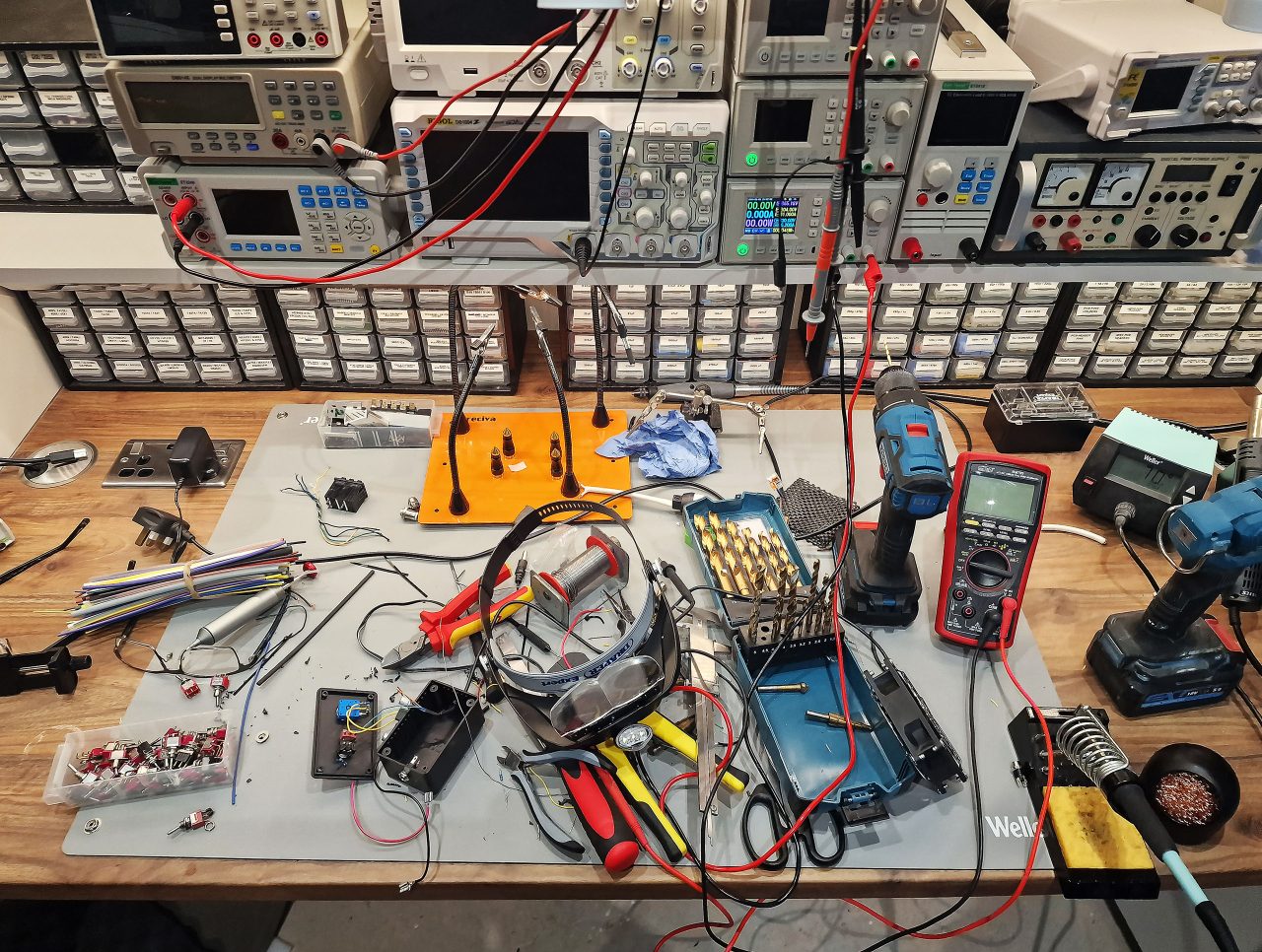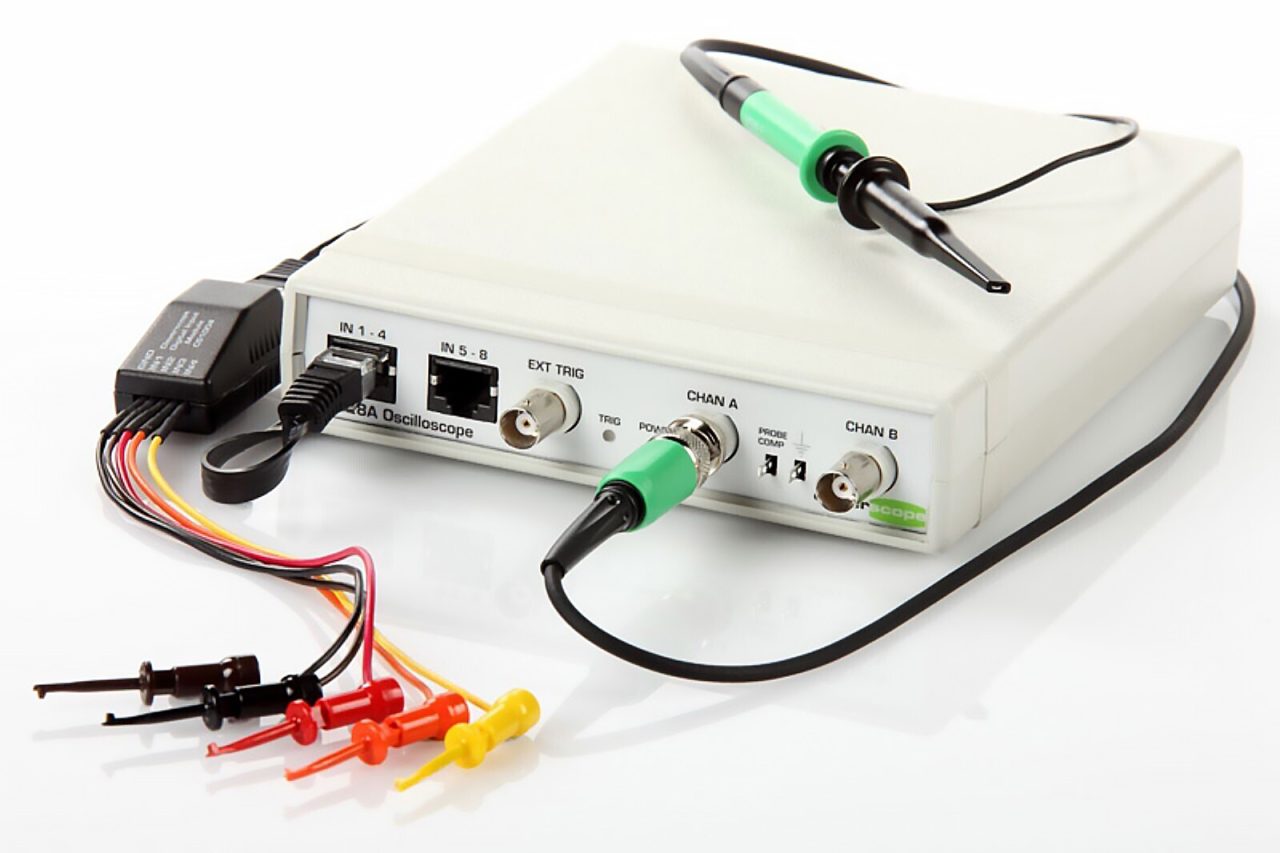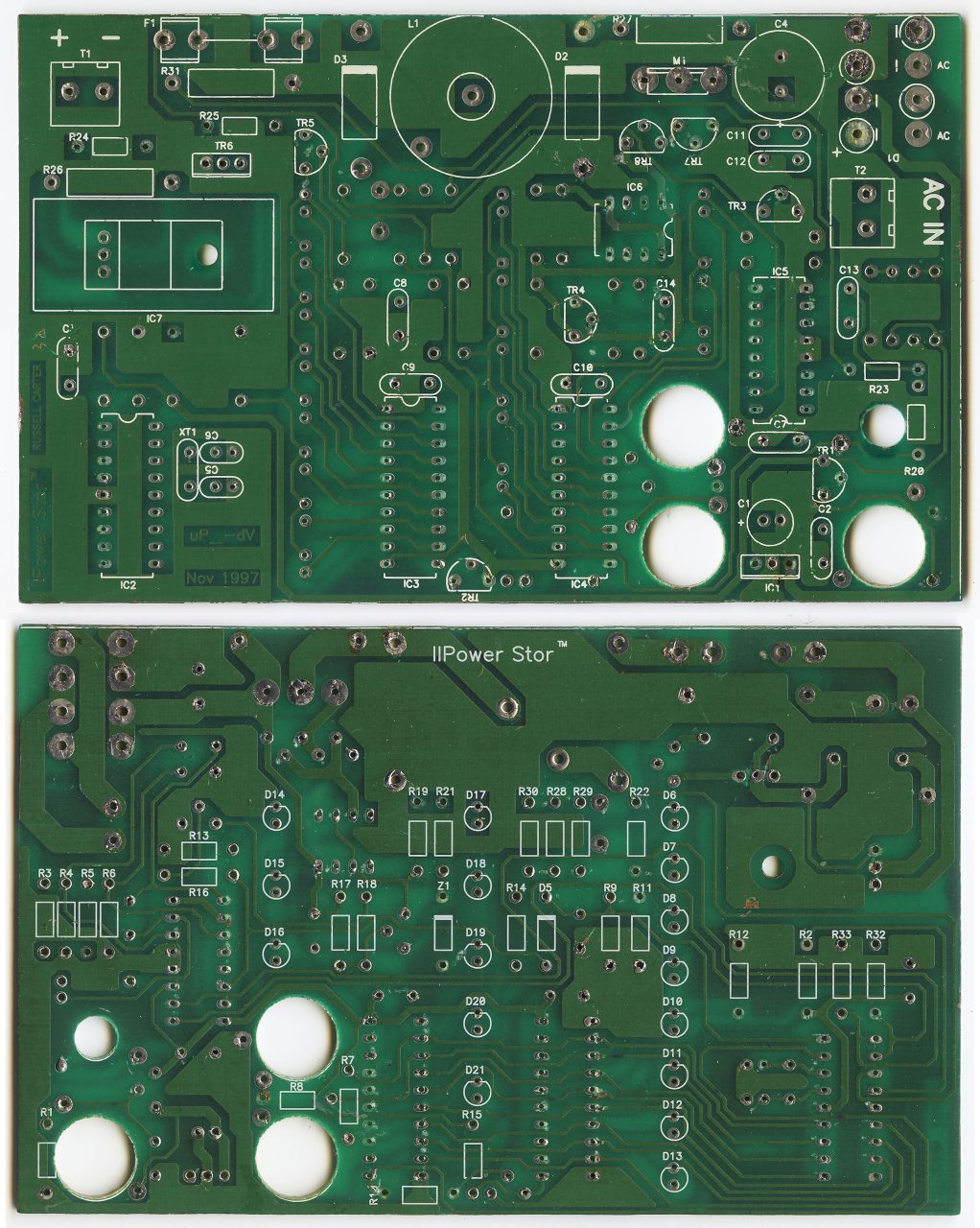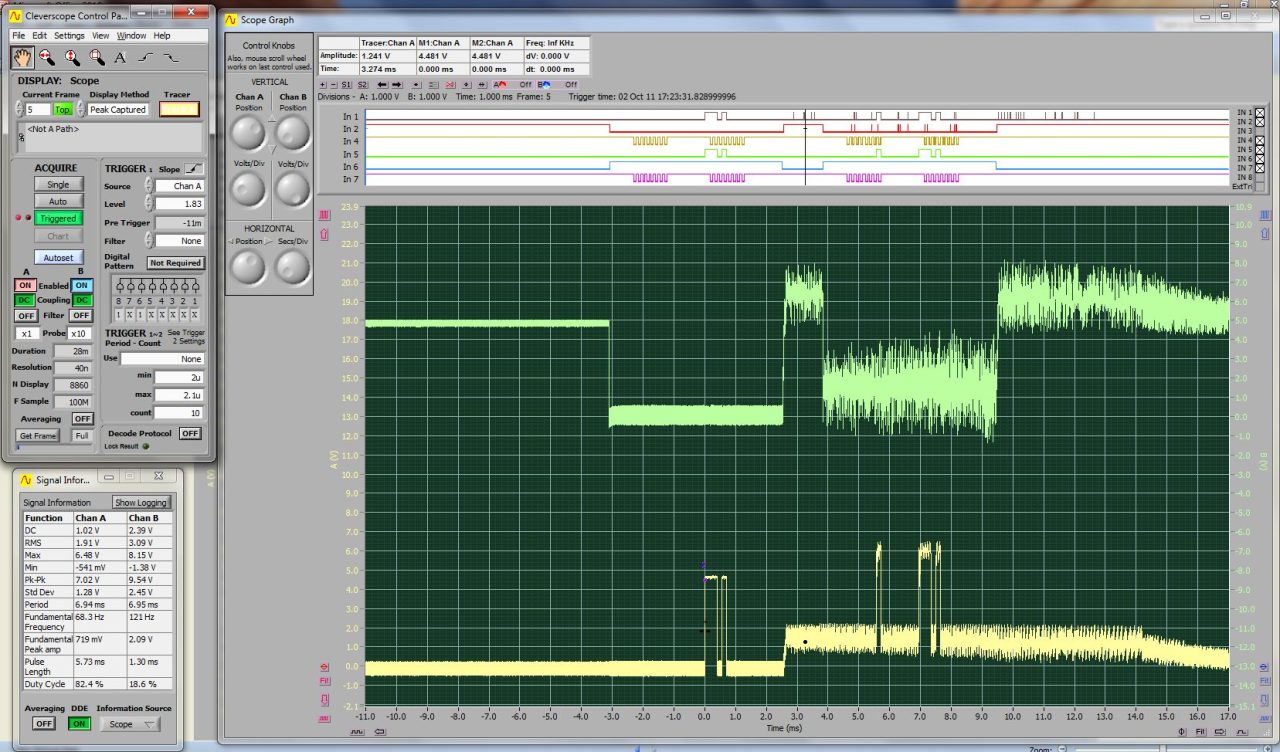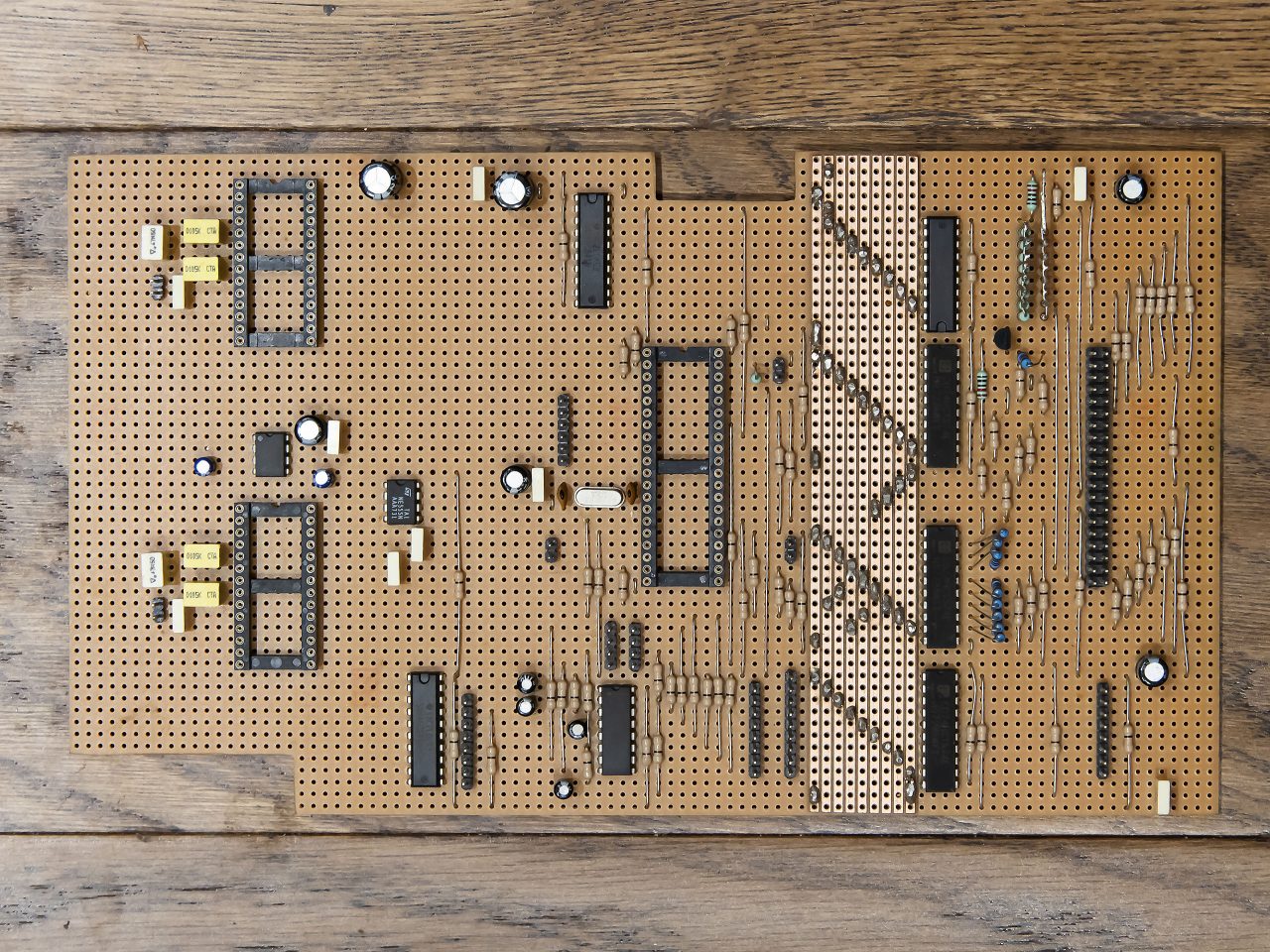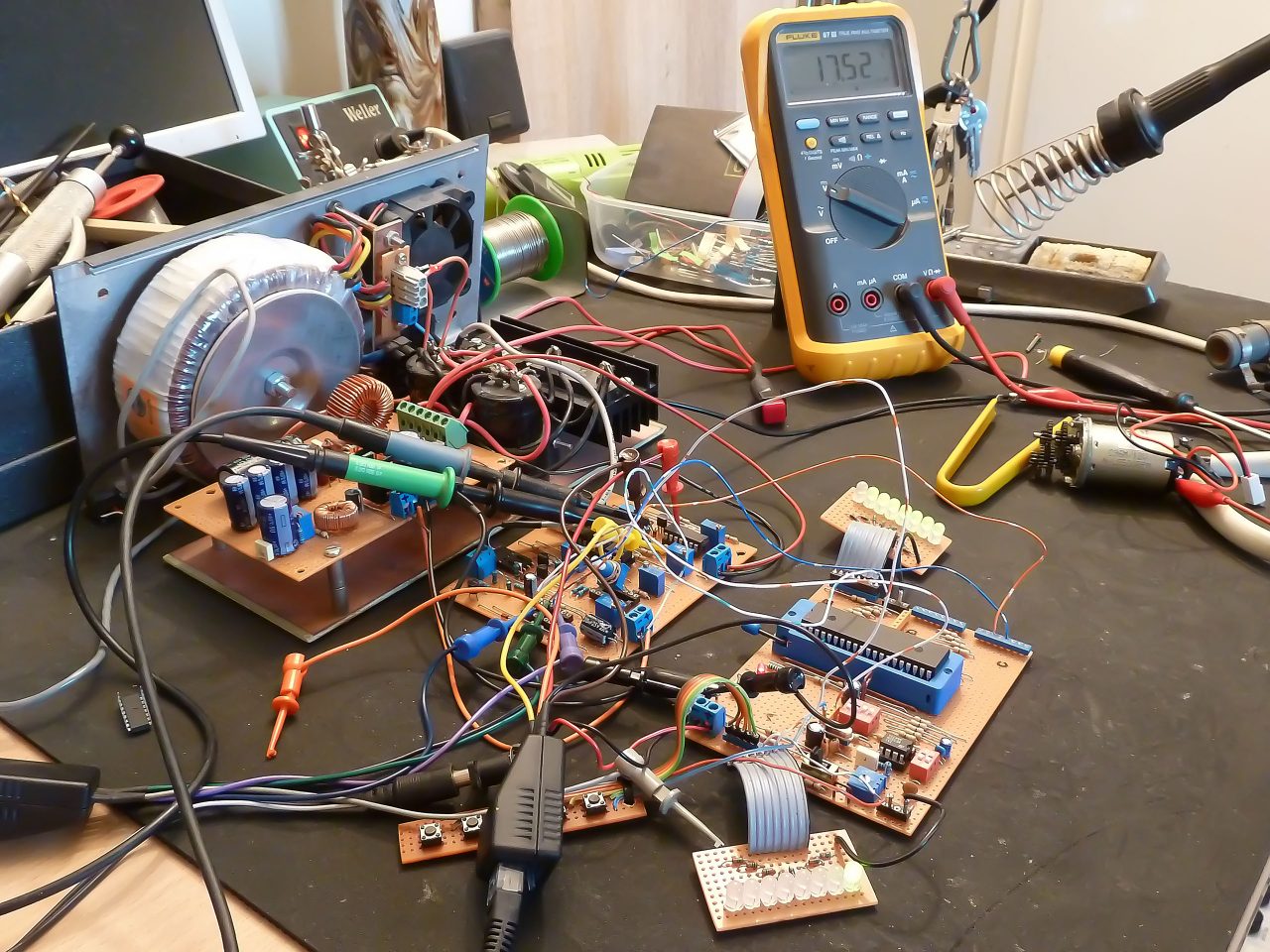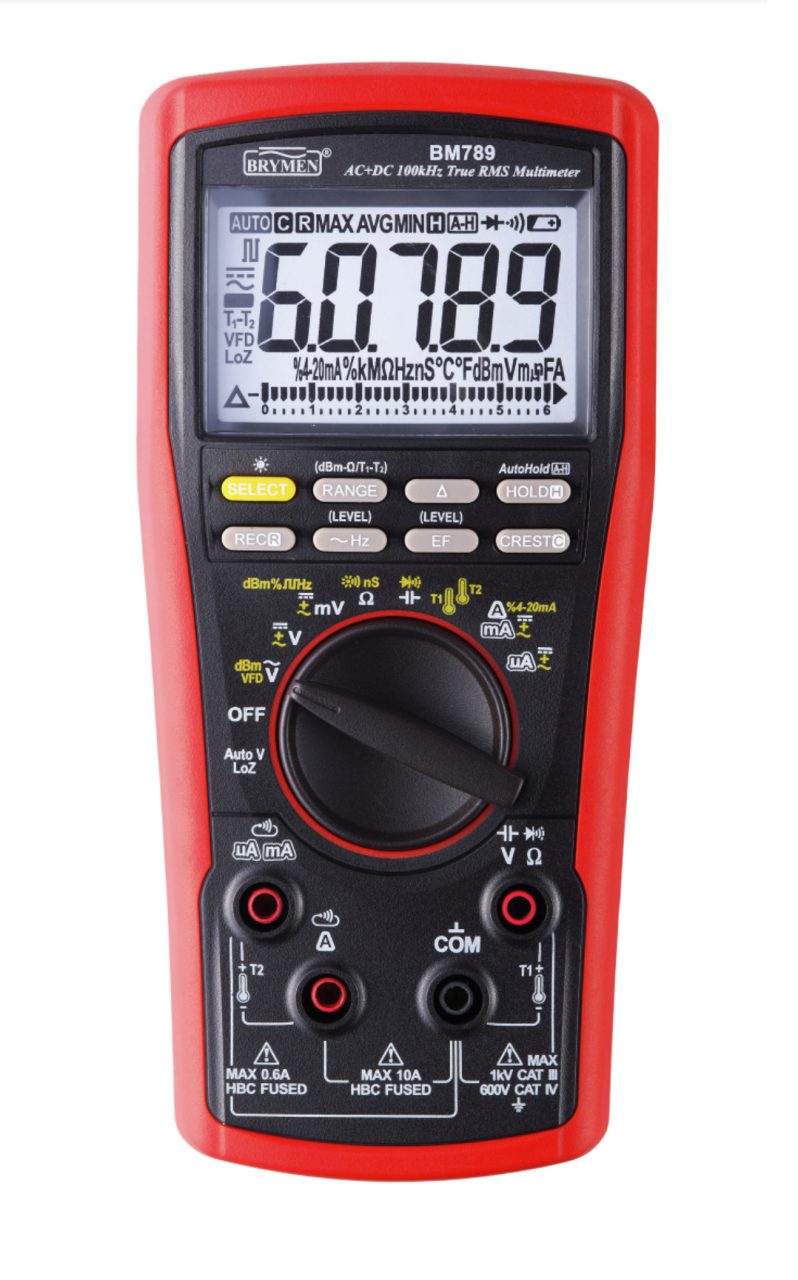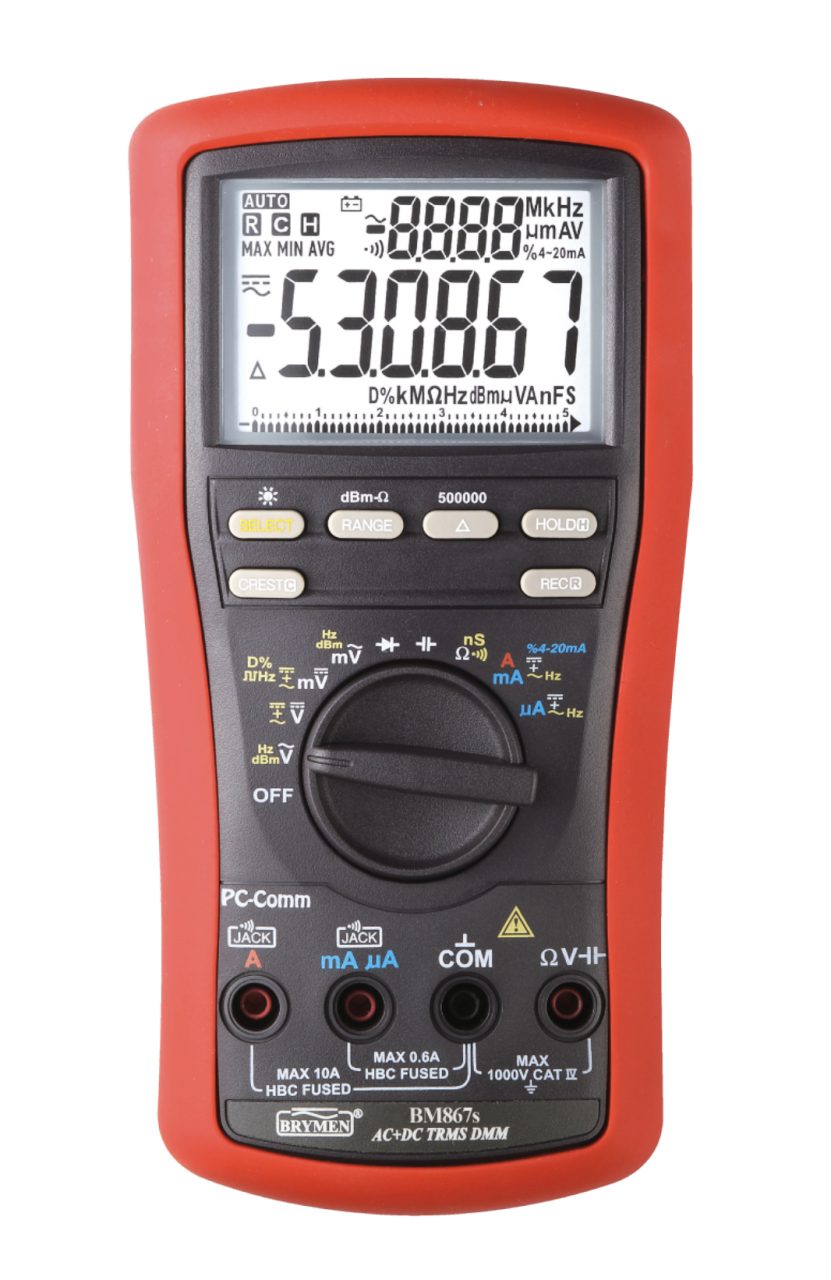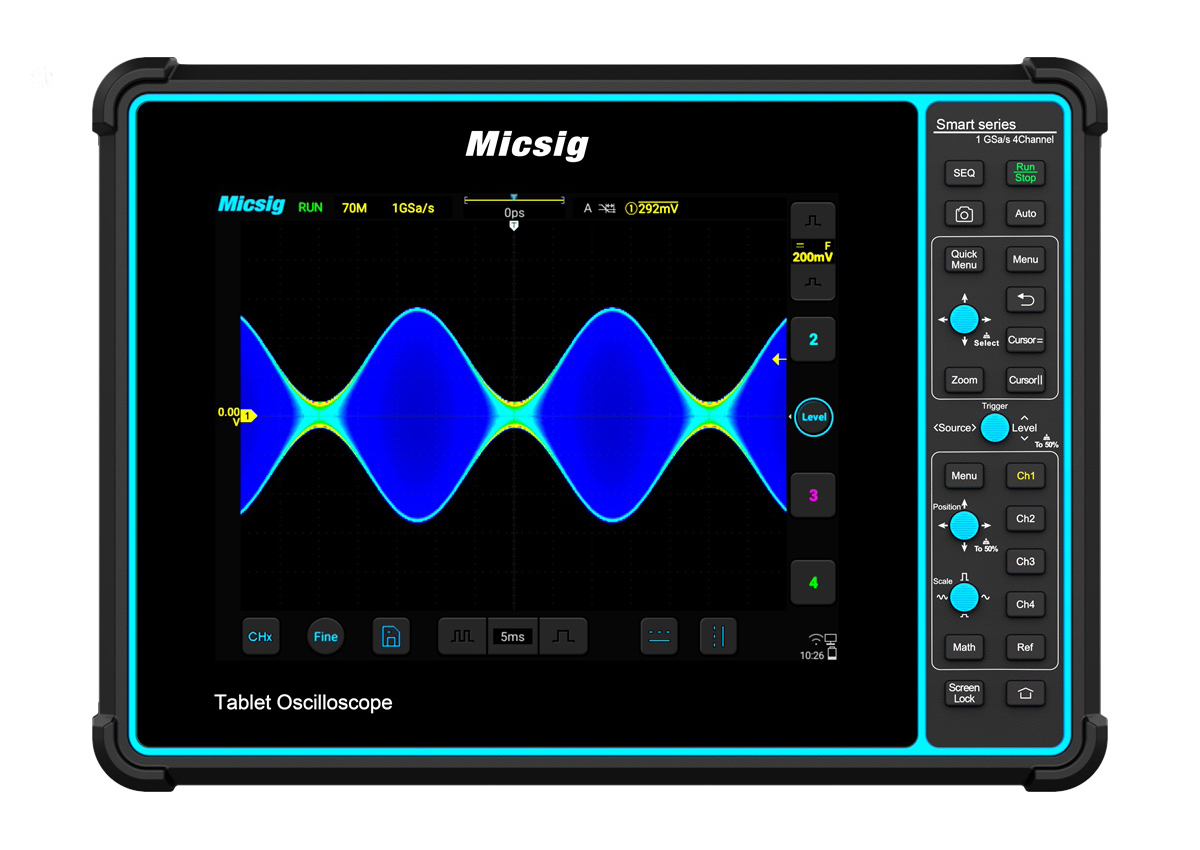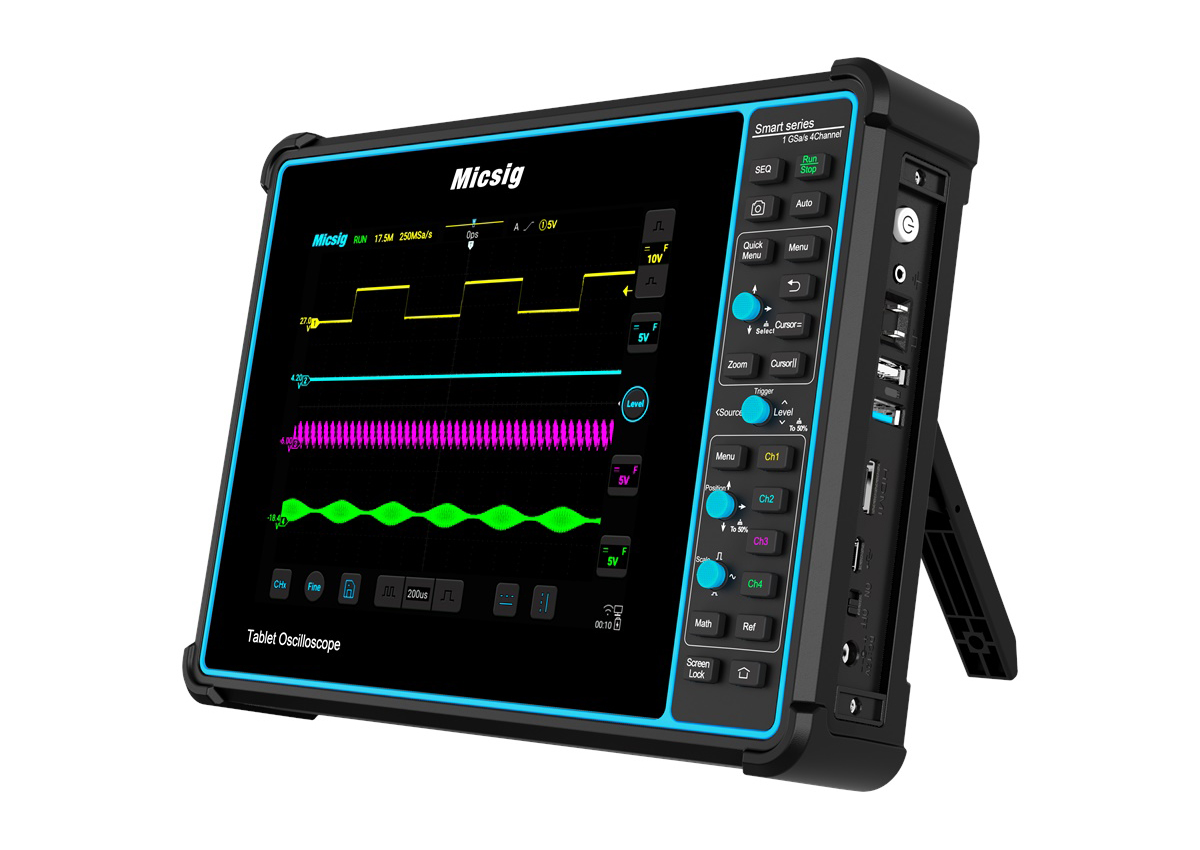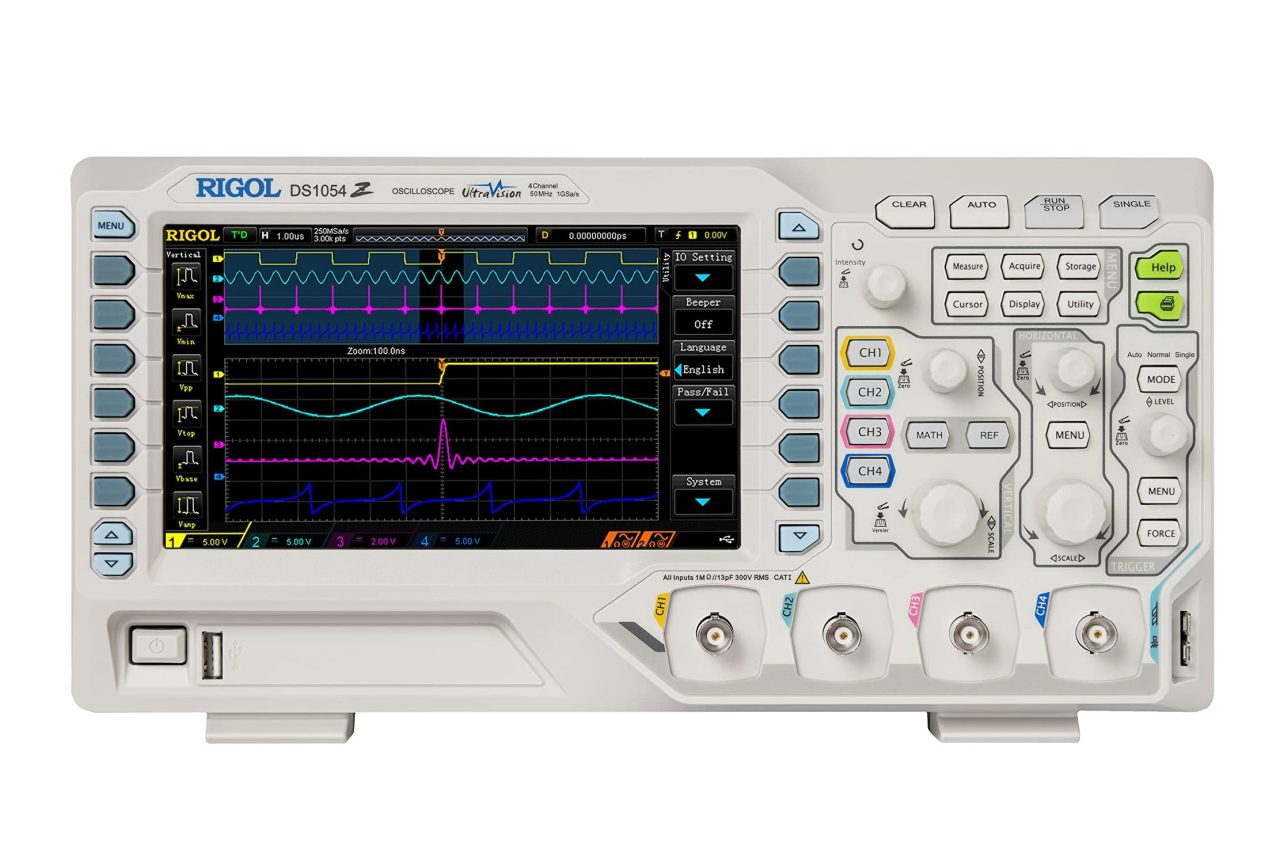Electronics
Modified:
Introduction
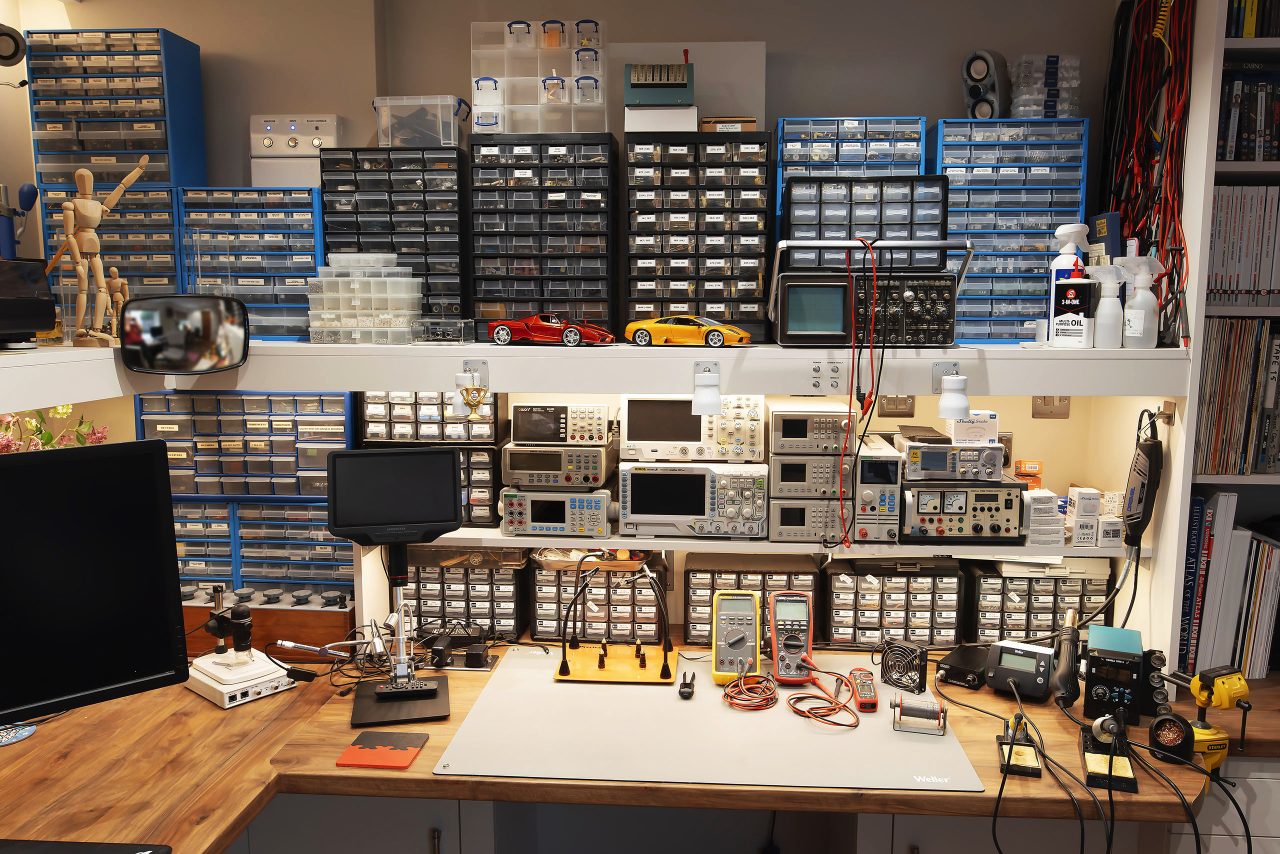
Electronics is very diverse – it spans many industries, including telecommunications, information technology, industrial automation, healthcare, and consumer electronics, to name a few. This Wikipedia article shows just how vast the spectrum of electronics is. So to say I am interested in electronics, is really like saying I like food!
I love designing digital and analog circuits, as well as building or reusing existing circuits to achieve my end goal. I do not like repair work at all (aside from my own designs), although I will repair things that I want to get working for my own purposes.
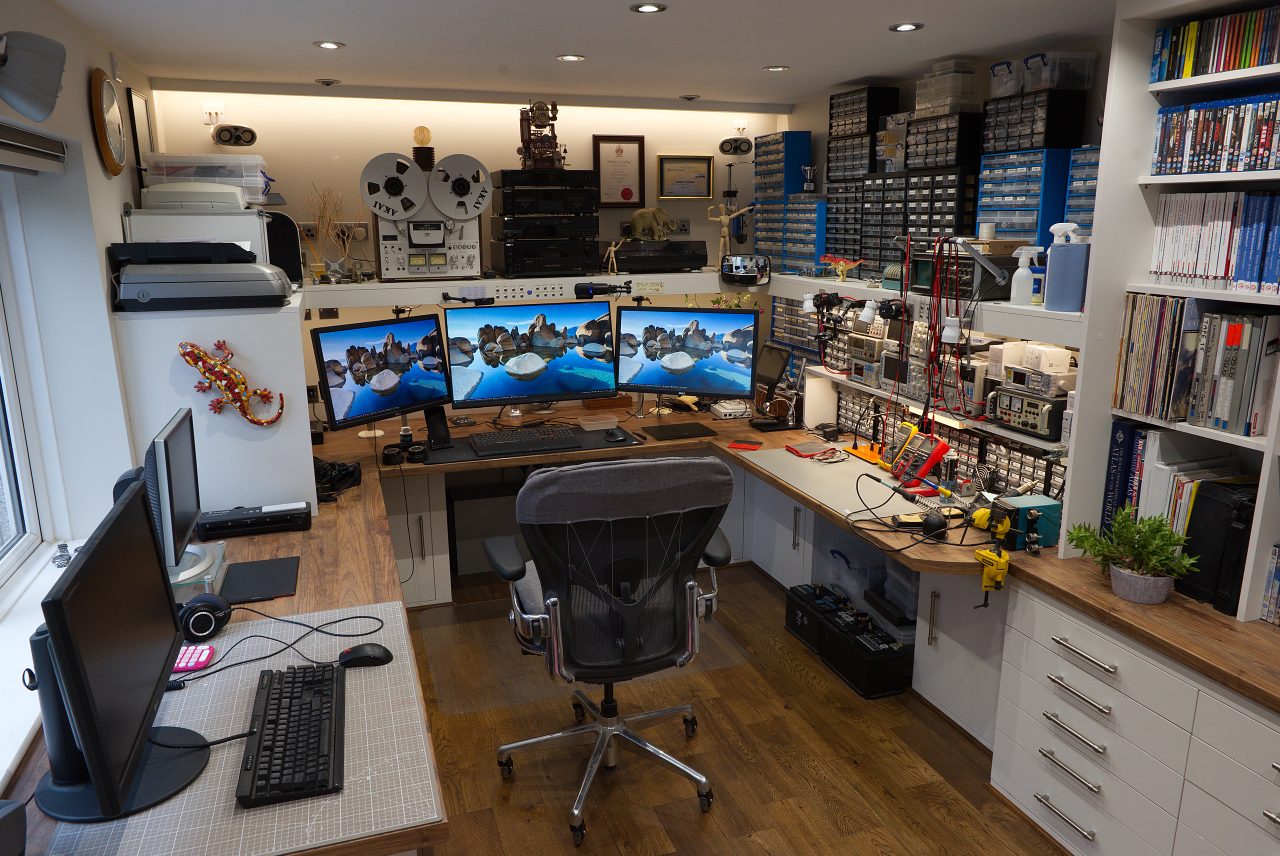
See the Study & Electronics Lab panorama for the bigger pictrure.
Instead of trying to explain which area of electronics I am interested in, I will just list some examples of what I enjoy designing / building / using:
- Power Supplies
- Mains DC Linear Regulated Power Supply
- Mains DC PWM Regulated Power Supply
- DC-DC Buck & Boost Converters
- Digital Logic
- Motor Control
- Stepper
- Servo
- AC & DC Brushed
- DC Brushless
- PID Control
- Open and Closed Loop Control Systems
- Remote Control
- Infrared
- RF 833MHz & 2.4GHz
- Single Board Computers (SBCs)
- Raspberry PI
- Microcontrollers (MCUs)
- Microchip PIC16
- Microchip ATmega328P
- MCU Development Boards
- Arduino
- ESP32
- Teensy
- RP2040
- Sensors
- Any / all
- Displays
- LED
- 7 Segment
- LCD
- LED Matrix
- Robotics
I like reading through electronics magazines (when I have time) to get inspiration, and sometimes build a published circuit or a version of it. My favourite magazines are Elektor and Practical Electronics (previously Everyday Electronics, then Everyday Practical Electronics).
I am subscribed to various YouTube channels, such as:
These are great resources for product reviews and teardowns, electronic theory, interesting projects, and some of them are very entertaining, like the video by Dave Jones below!! 😀
My Equipment
I have collected various bits of test and measurement equipment over the years, as well as tools. I am not (currently) a professional, so am not willing to spend thousands on equipment, and like a lot of other hobbyists, a lot of my equipment comes from AliExpress.
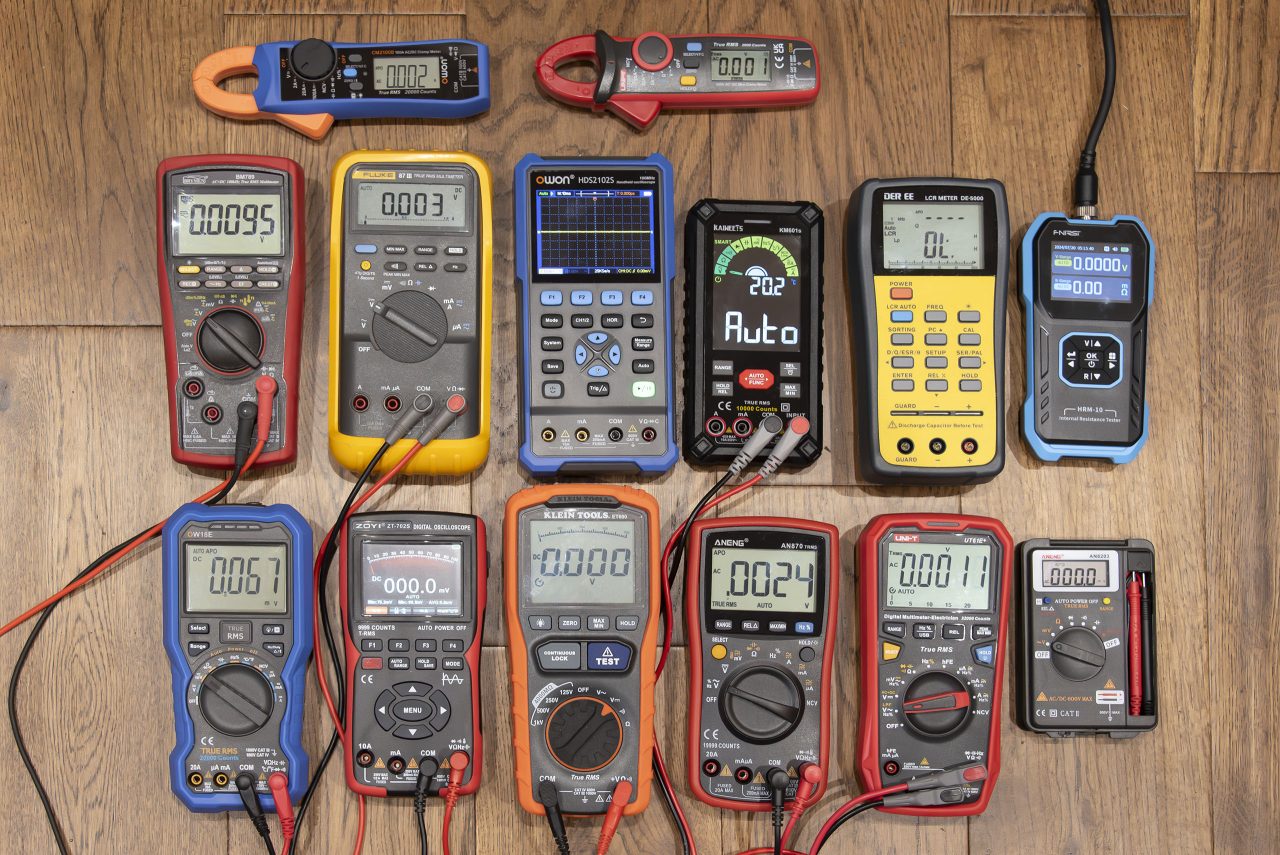
My core set of test and measurement equipment and tools consists of the following:
- Rigol DS1054Z Oscilloscope
- Micsig STO1004 Oscilloscope
- FeelElec FY6900 Arbitrary Waveform Generator
- East Tester ET3240 Bench Multimeter
- 3 x Riden RD6006 / RD6012 Power Supplies
- Brymen BM789 Multimeter
- Brymen BM867s Multimeter
- Fluke 87 III Multimeter
- Weller WE1010 Soldering Station
- YIHUA 959D-II Hot Air Rework Station
- CK SensoPlus cutters / long nose / bent nose / flat pliers
- Wiha, Wera, CK, Felo, Stanley screwdrivers
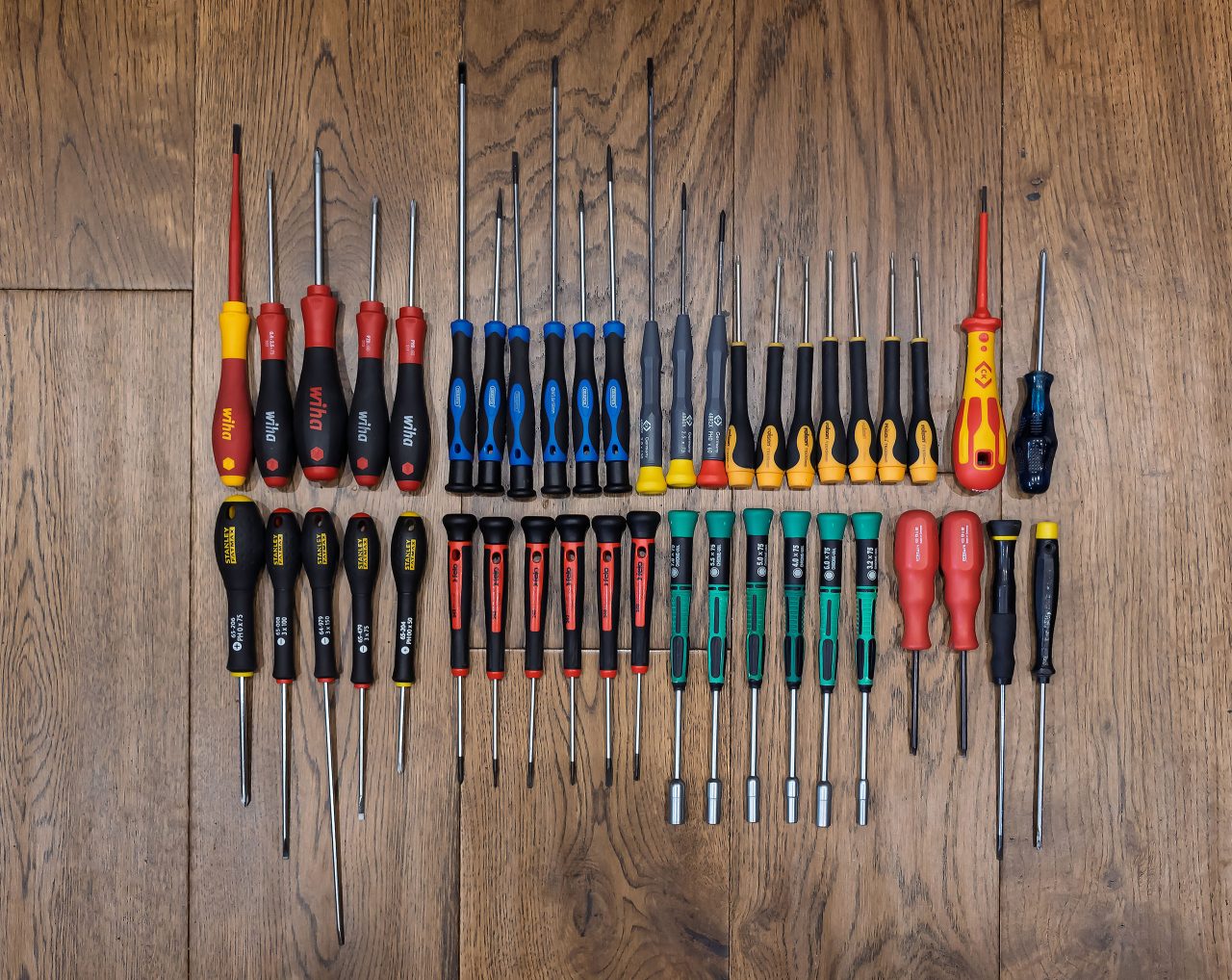
Below is an exhaustive list of all my other test and measurement equipment. I own a lot of multimeters, and this is mostly because I have watched review videos of them, and all of them appear to have a unique selling point, such as PC connectivity, accuracy, resolution, good interface, good protection, good price point for value, etc. And it is good to compare readings with other meters to determine the most accurate value you are trying to measure. Some of them are also old or unreliable. I keep a multimeter in the car, a couple in the workshop, and the rest in my lab. You just can’t have too many multimeters!
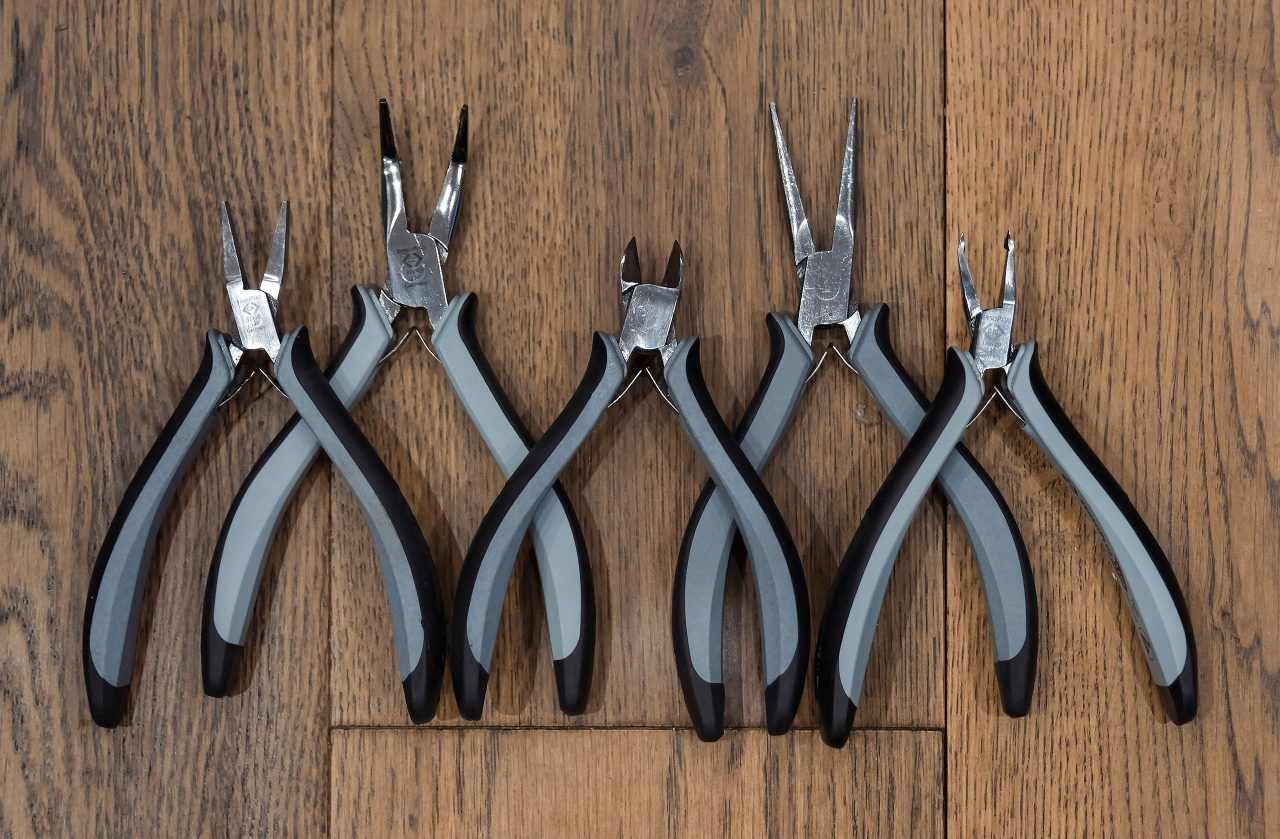
- Oscilloscopes:
- Cleverscope CS328A USB
- Owon SDS1102
- Philips PM3217 CRT
- Owon HDS2102S Handheld, Multimeter and Signal Generator
- Zoyi ZT702S Handheld and Multimeter
- Bench Multimeters
- Owon XDM1041
- DM8145
- Power Supplies
- Digital PWM Power Supply (I built this myself – not complete)
- Variac Power Supply (I built this myself)
- Multimeters
- Owon B41T+
- Owon OW18E
- Uni-T UT60E
- Uni-T UT61E+
- Kaiweets KM601S
- Astro AI DM6000AR
- Mooshimeter
- Aneng AN870
- Aneng AN8203
- Aneng AN-888S Bench Multimeter
- Aneng A3005A
- Aneng A3005B
- B Side ZT102 Multimeter
- Clamp Meters
- Kaiweets HT208D
- Uni-T UT10E
- Owon CM2100B
- Hantek CC-65 Oscilloscope Current Clamp
- Soldering Stations / Irons
- Weller WTCP 50 Magnastat
- Weller 8100UD Soldering Gun
- Antex 18W Soldering Iron
- KSGER T12 Soldering Station
- Sequre SQ001 (TS100) Soldering Iron
- Other
- East Tester ET5410 Electronic Load
- DreamSourceLab DSLogic Plus Logic Analyser
- Andonstar AD409 Pro ES Microscope
- Veho VMS-001 USB Microscope
- Klein Tools ET600 Insulation Tester
- DER EE DE-5000 LCR Meter
- ZOYI ZT-MD1 LCR Tweezers
- Kaiweets ST100 Multifunction Voltage Tester
- FNIRSI HRM-10 Internal Resistance Tester
- PICSTART Plus Development Programmer
- FG-100 Thermometer
- CROPICO RBB6 Decade Resistor Box
- Treedix USB Cable Tester
- Dual Resistance Decade Box (I built this myself)
- Multifunction Tester TC1
- Riden UM34C USB Power Monitor
- Bosch PKP 18E Glue Gun
- Erbauer EHG2000 Heat Gun
- Dremel 4250
History
In the Beginning
I have been interested in electricity and electronics from about the age of 8 years old, or perhaps younger. Inspired by my father I learned to use a soldering iron around that time, and had one of my own in high school. I used to collect old circuit boards and de-solder the components to add to my collection. I built a few basic circuits to learn about and understand how components work.
After school and my mandatory 2 years of National Service in the Army I worked for an industrial control panel manufacturing company (EPM) as a Panel Wirer, where I was trained in constructing and wiring large industrial control panels for factory machinery. The panels I constructed include star-delta motor starter, temperature control, power supply, power factor correction, PLC, and other miscellaneous panels containing relays , contactors, terminals, lights, switches and other panel instrumentation.
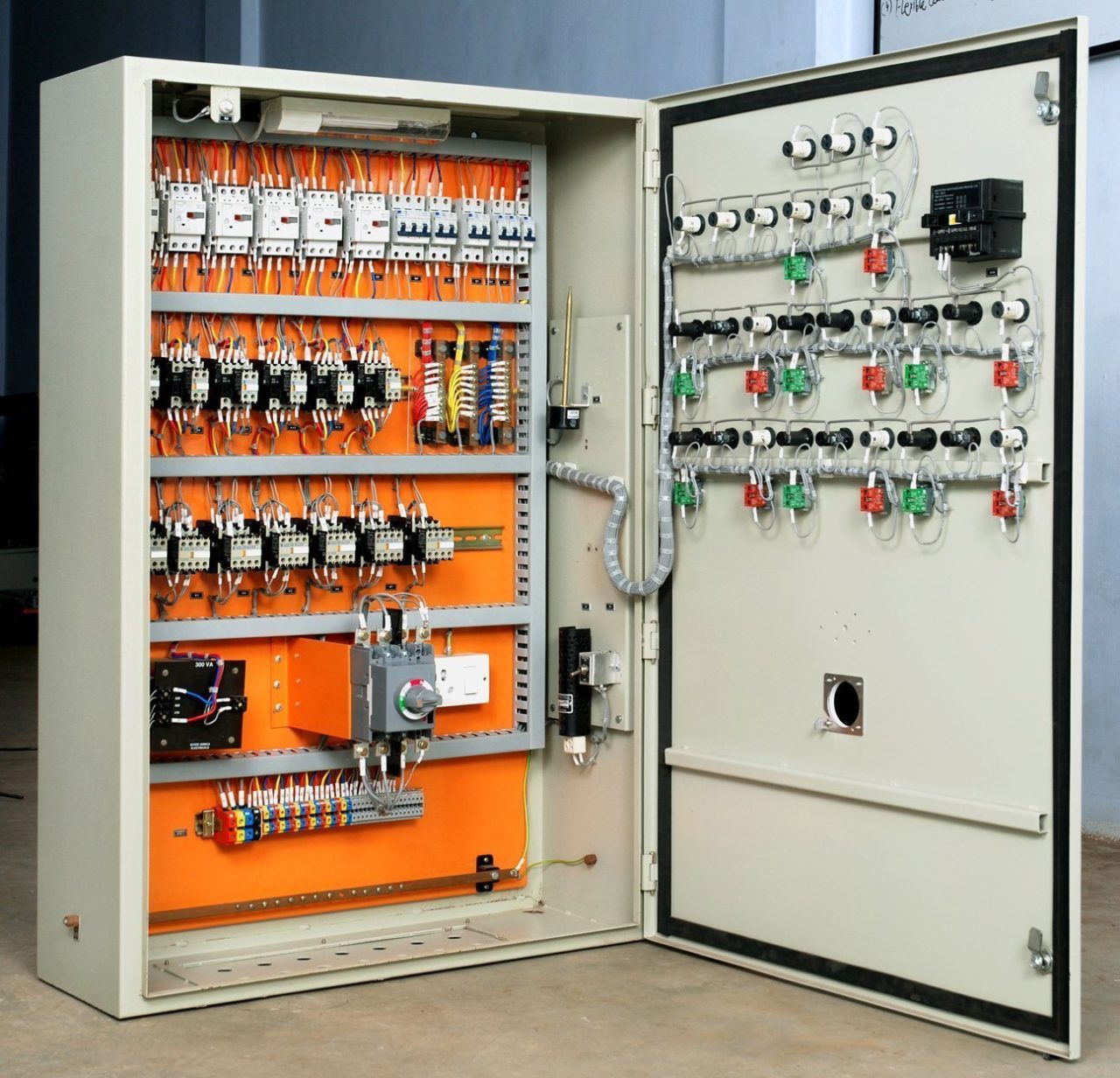
A couple of years later in my gap year I worked in the Hoover factory in East London South Africa as an Assistant Electrician. I installed and repaired lighting, electrical machinery, control panels, mounted armoured cable on concrete, and all other electrical tasks required.
The skills and experience I gained at these two places have proved invaluable. At the time, while at home, I was building circuits I found in magazines and experimenting with building power supplies with current limiting.
After that (1991) I went to study Electrical Engineering at Port Elizabeth Technikon, which is now the Nelson Mandela University.
Electronic Engineering Studies
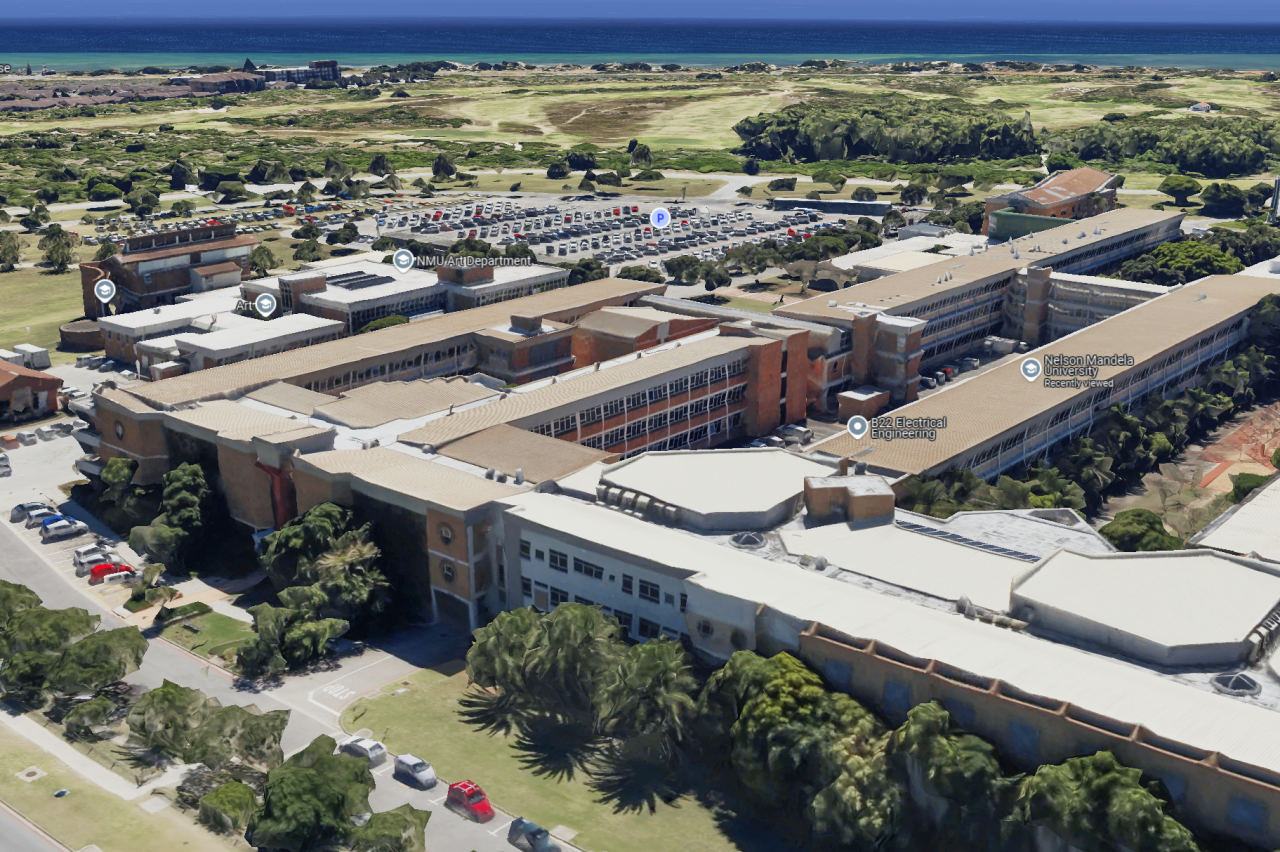
My Electrical Engineering Subjects (click to expand):
- Electronics 1, 2, 3
- Digital Systems 1, 2, 3
- Mathematics 1, 2, 3
- Electrical Engineering 1, 2
- Communication in English
- Industrial Technology
- Electronic Communication
- Projects 1, 2
- Power Electronics 2
- Control Systems
- Lotus 1-2-3
- Tango PCB Plus and Schematic
Below are some of the text books I used, that I still have today:
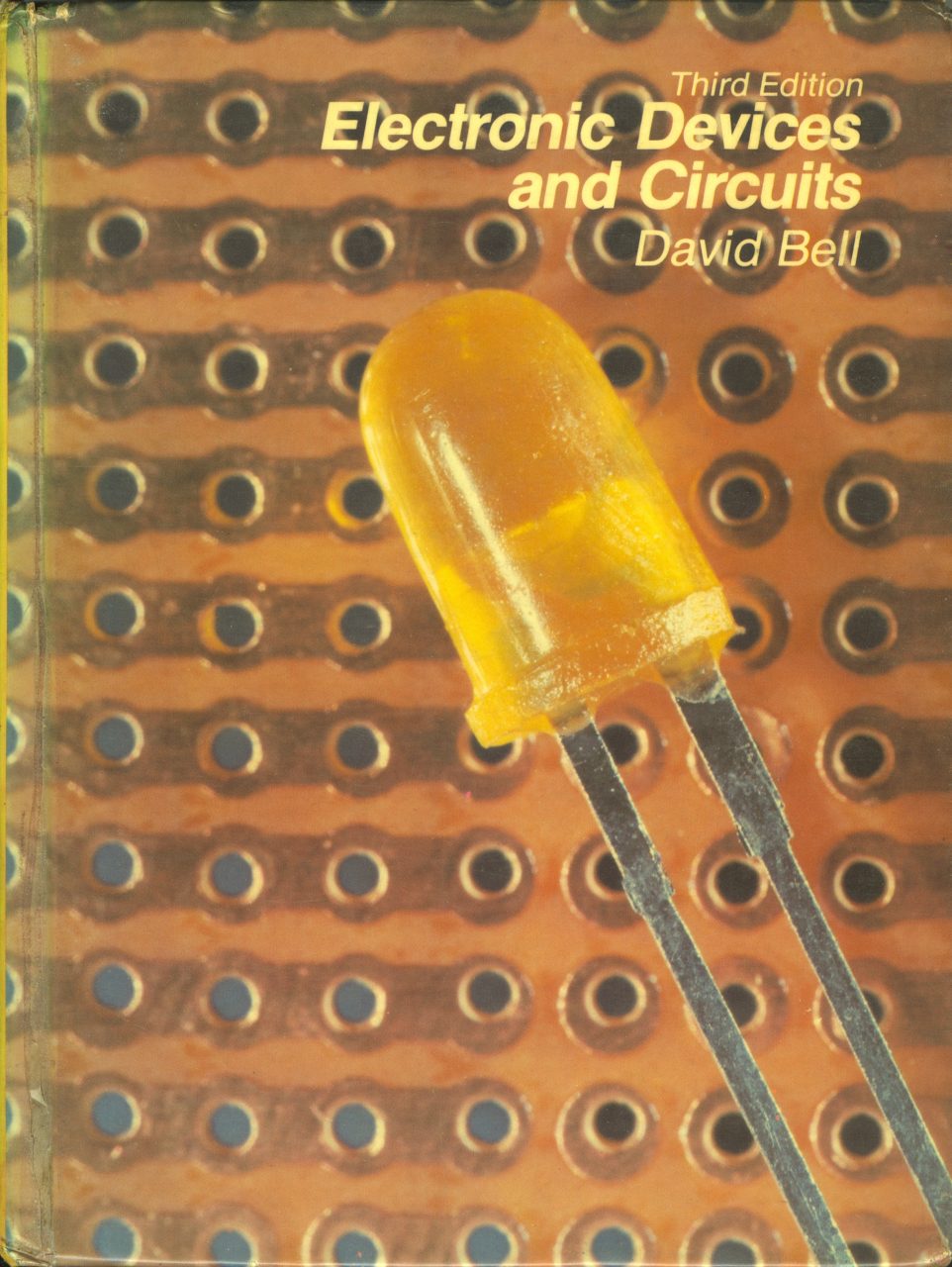
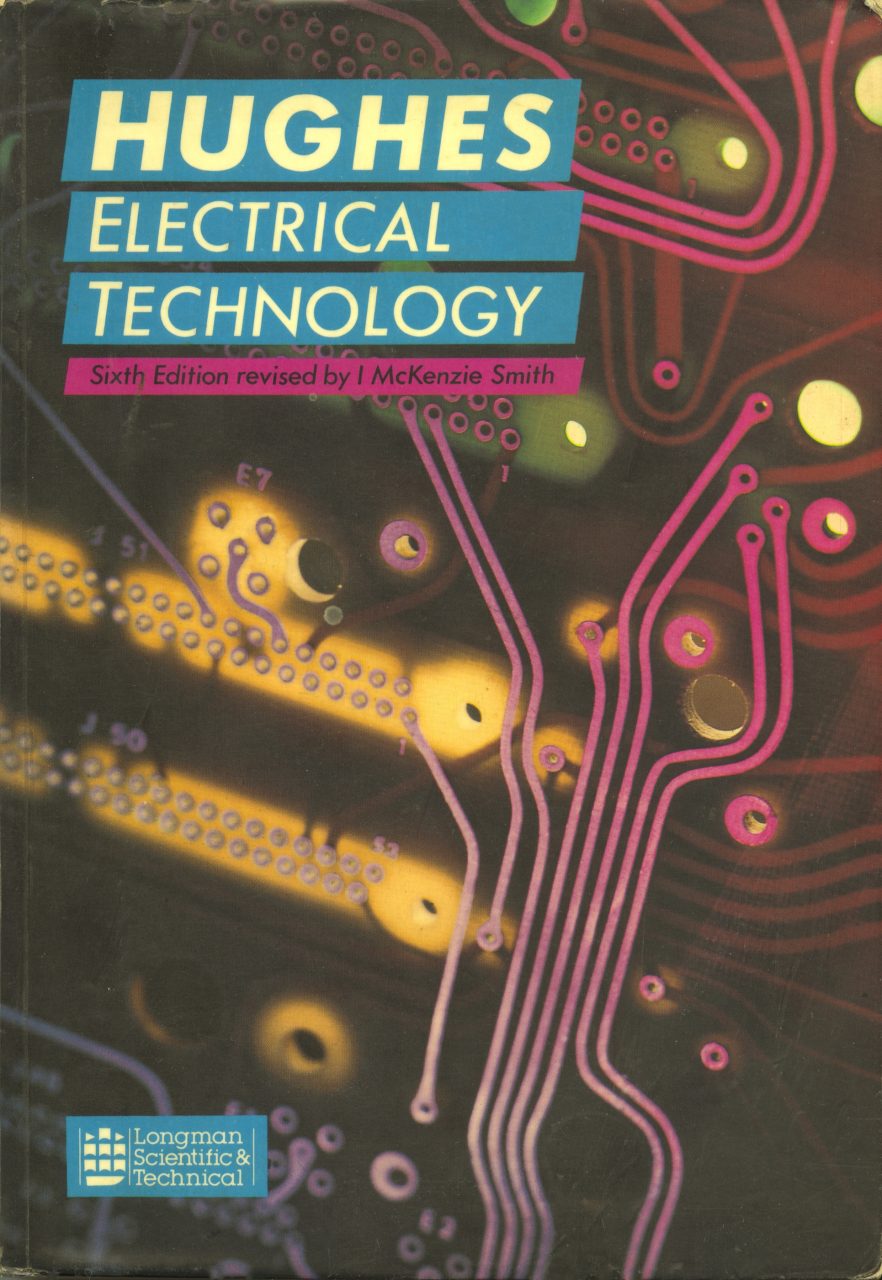
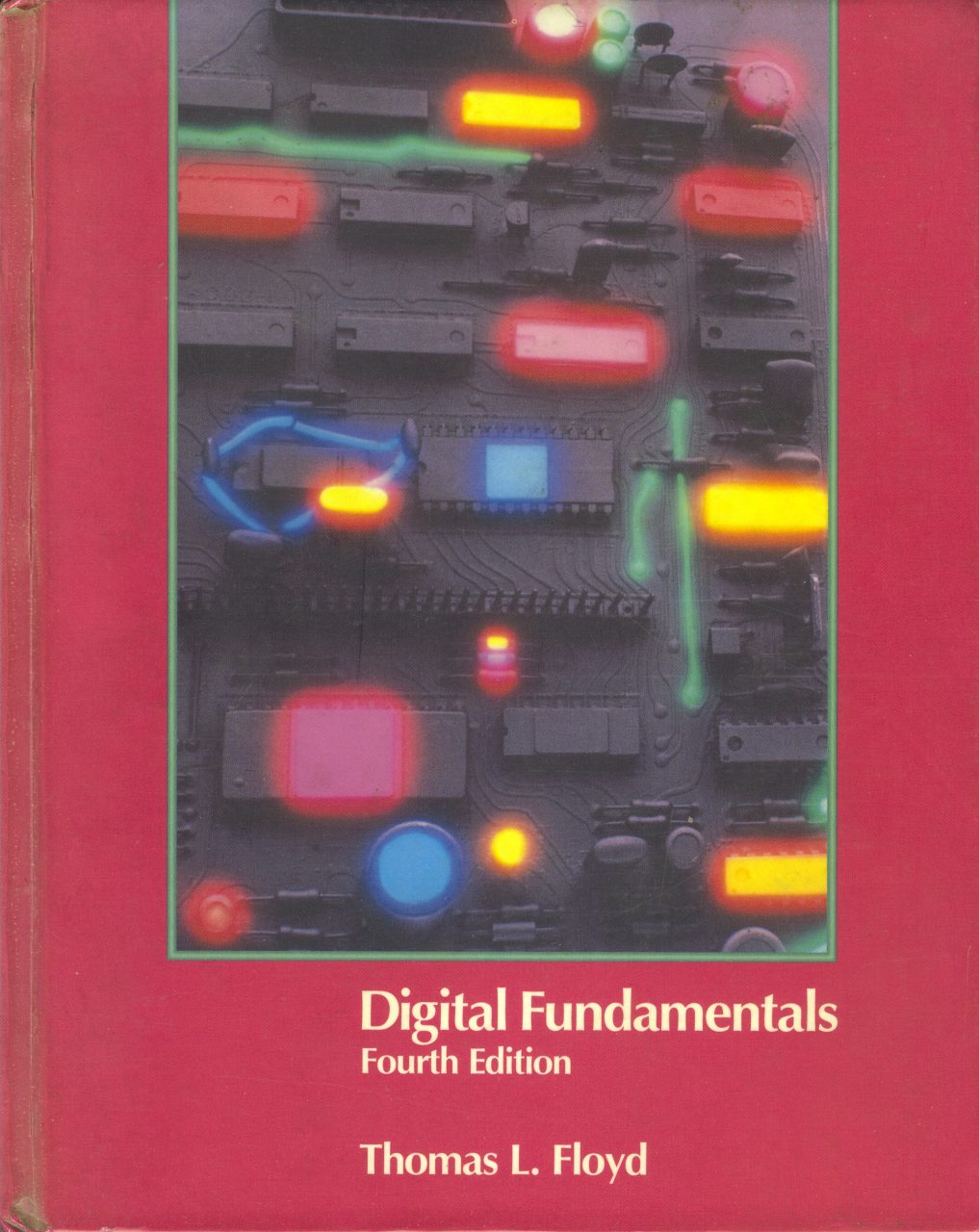
I found the above subjects thoroughly interesting, and enjoyed my time there, much more so than school. While pretty much all of the technology we learned is still current, the software we were trained in is not! We were trained in two software packages: Lotus 1-2-3 and Tango (PCB and Schematic). Lotus 123 is an old pre-Microsoft Excel spreadsheet program, and Tango PCB and Schematic are CAD programs which were used to create circuit diagrams and printed circuit board layouts.
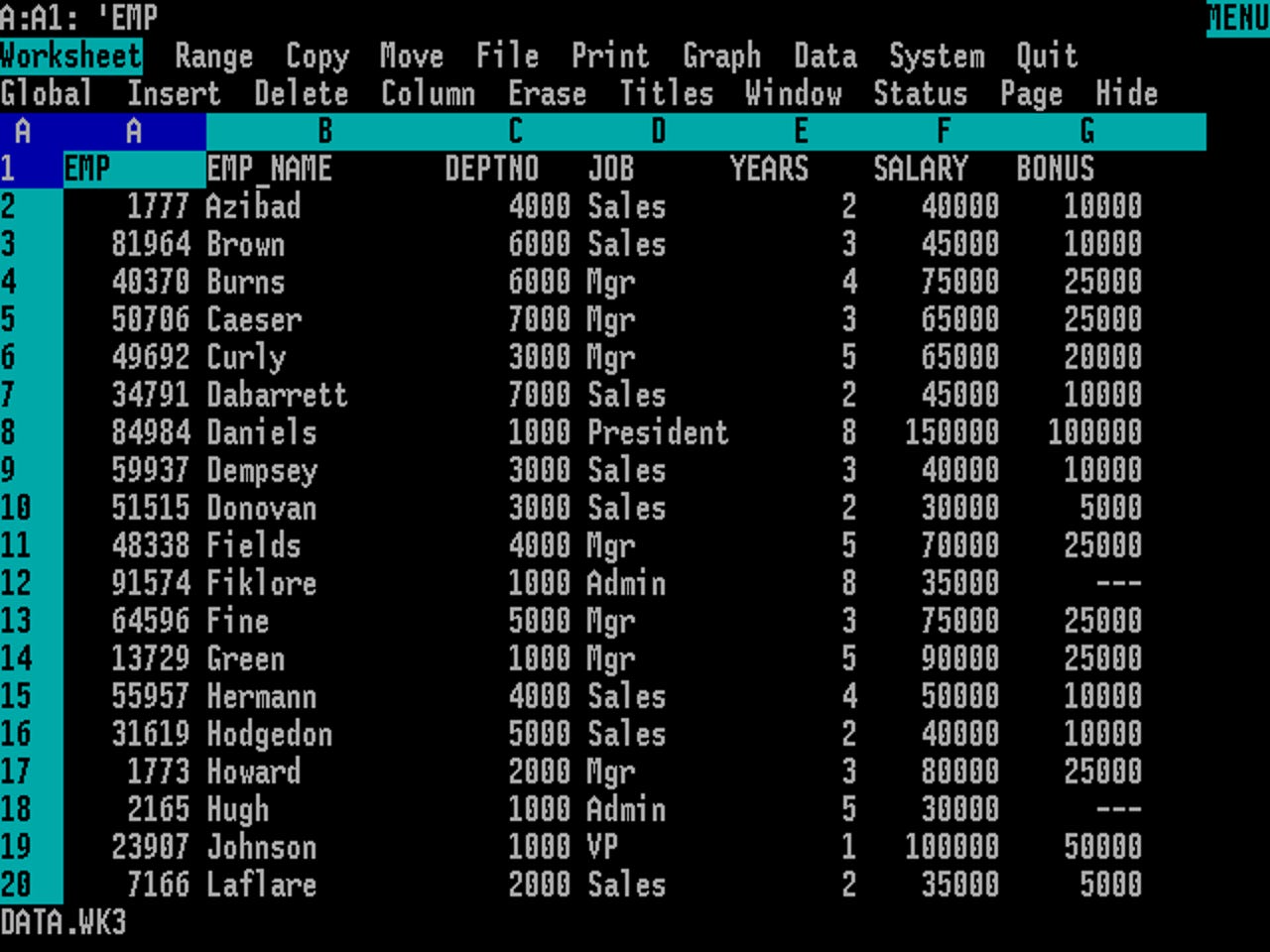
The computers they had in the lab were 286 IBM PCs, and they did not have hard drives, but instead had 5.25″ floppy drives that took 720KB disks! You loaded the operating system (DOS) and the programs from floppy disks, and saved your files on them!
We did have mice for use with Tango, but it was more common and more efficient to use keyboard shortcuts. Once you completed a design, it was not considered ‘real’ or complete unless you printed it out or plotted it on a large XY plotter!
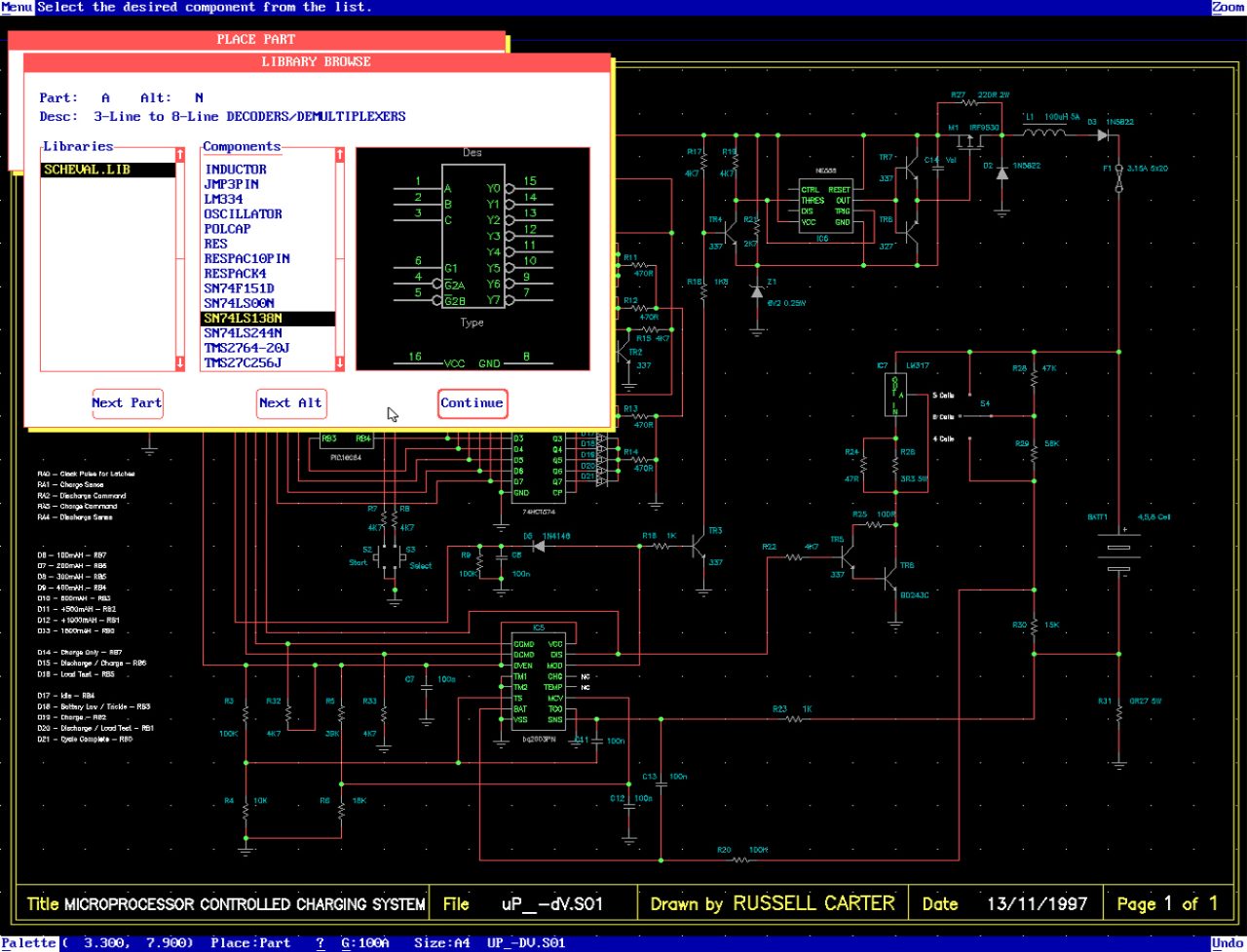
I used to love going to the library in the lunch break and browsing Elektor and Everyday Electronics magazines. I used to look for interesting circuits to build, then photocopy and keep them in a file!
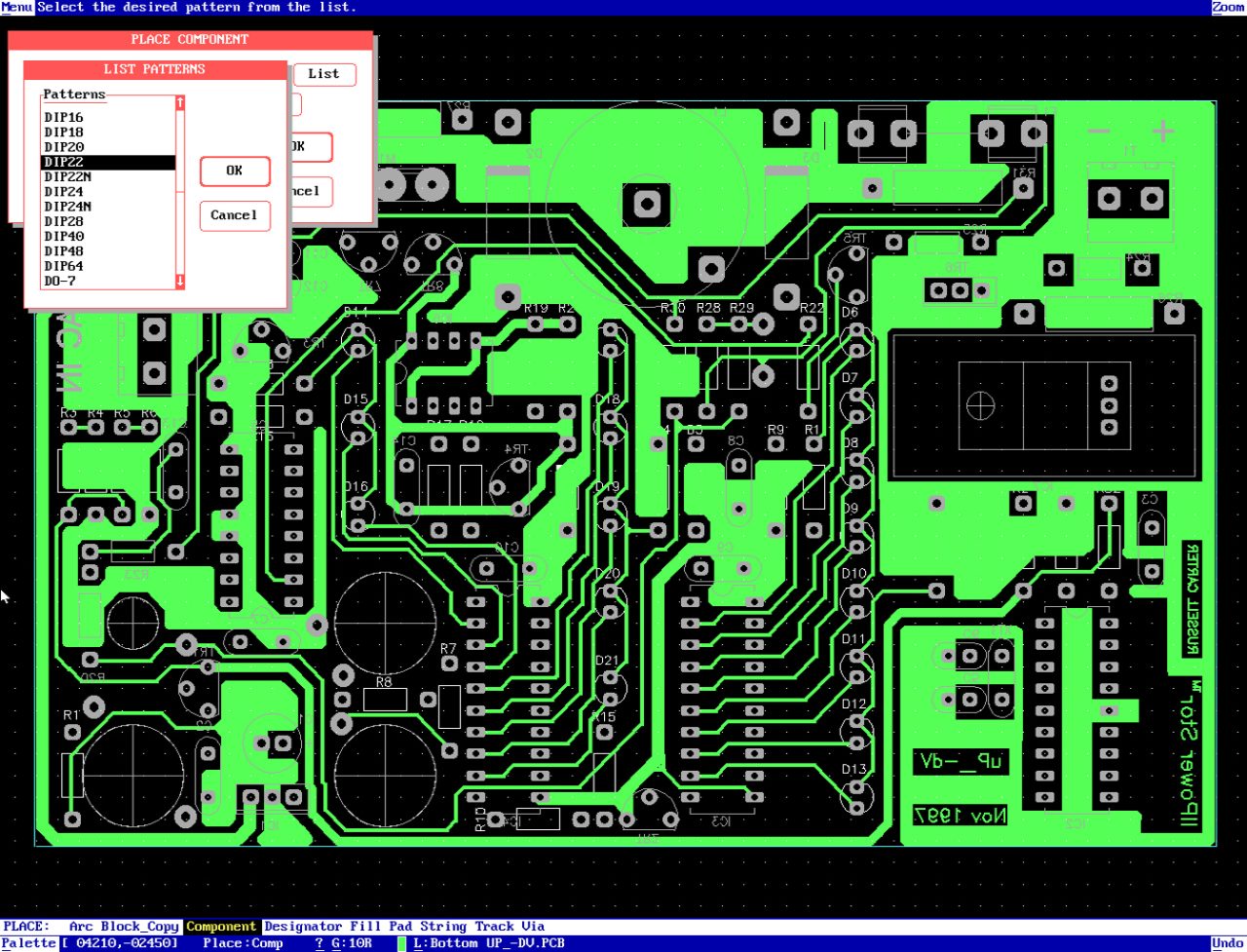
After my studies I went on to work in the electronics industry for 5 years in Johannesburg, designing industrial battery charging systems and power supplies. I designed and assembled various products ranging from small simple constant current chargers, through to multi-bay fast PWM chargers with intelligent charge termination.
PIC Microcontroller
In 1996 A friend of mine introduced me to the Microchip PIC16C84 microcontroller (this later became the PIC16F84). After hearing about this device and it’s capabilities (most notably the ability to reprogram it over and over), I was very interested and bought a programmer kit from him and put it into a project box with a serial port, DIL socket and 4 LEDs.

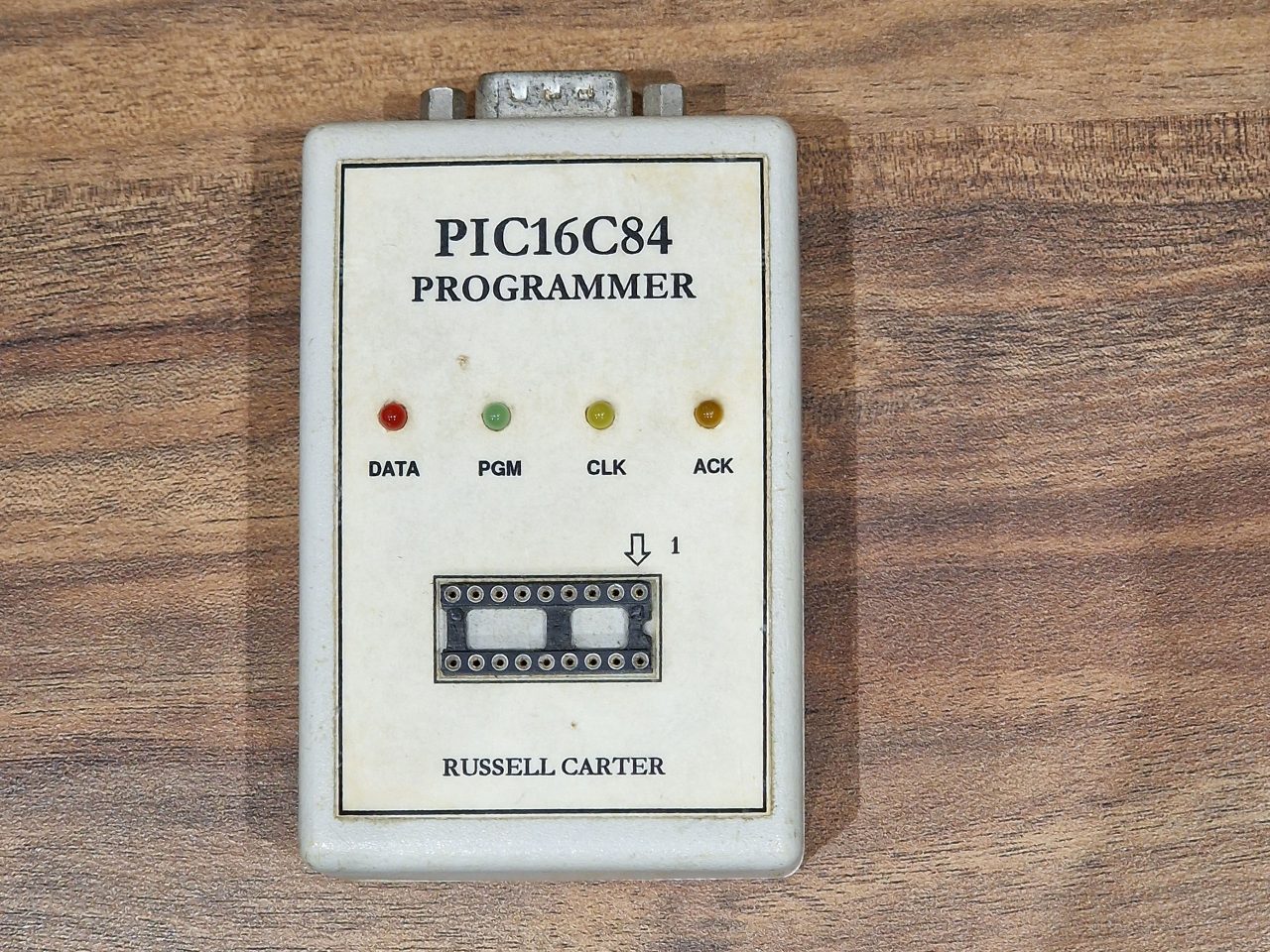
I then taught myself assembler (machine code) programming using a Microchip data book I got from a supplier, which contained the 110 page PIC16C84 datasheet.
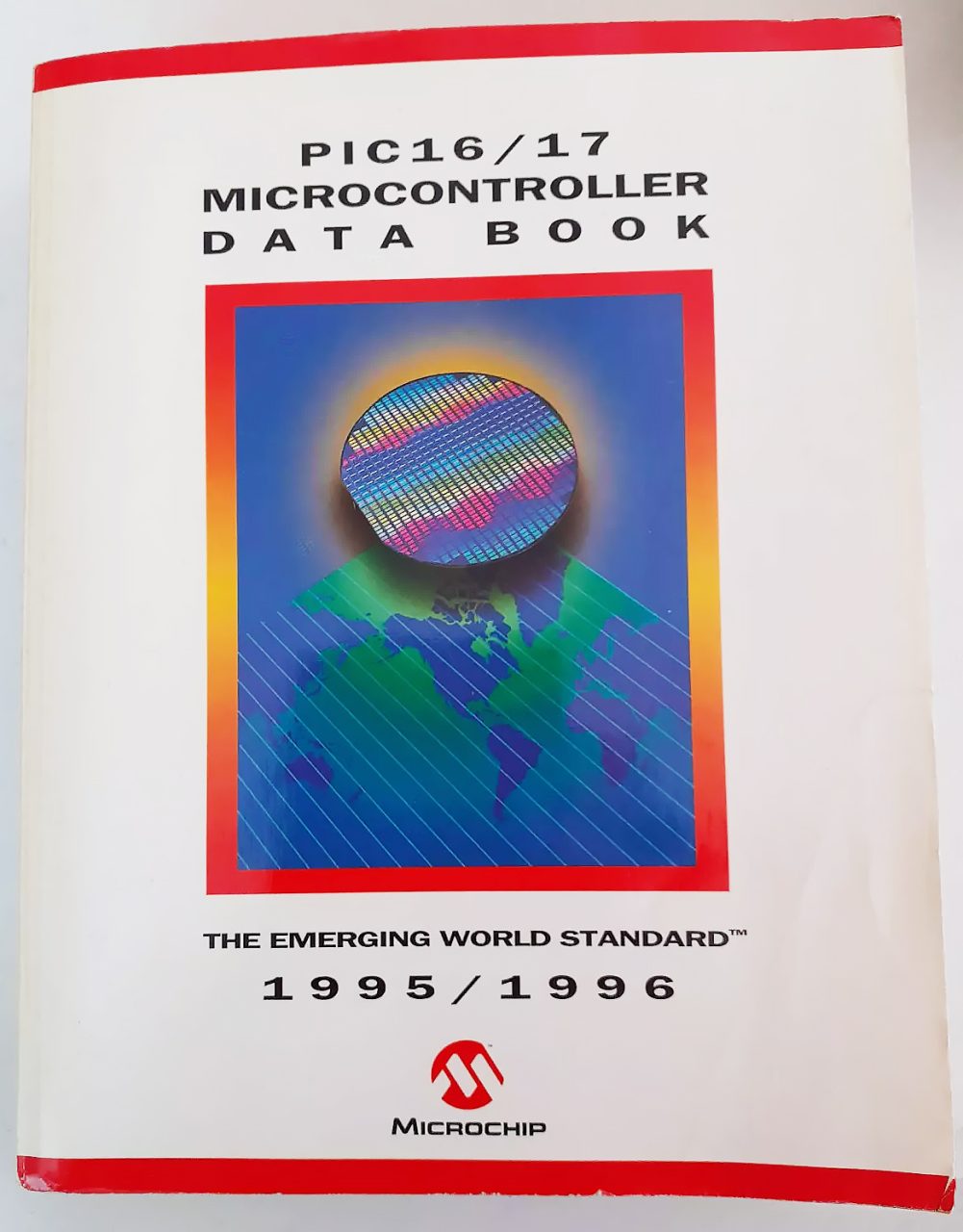
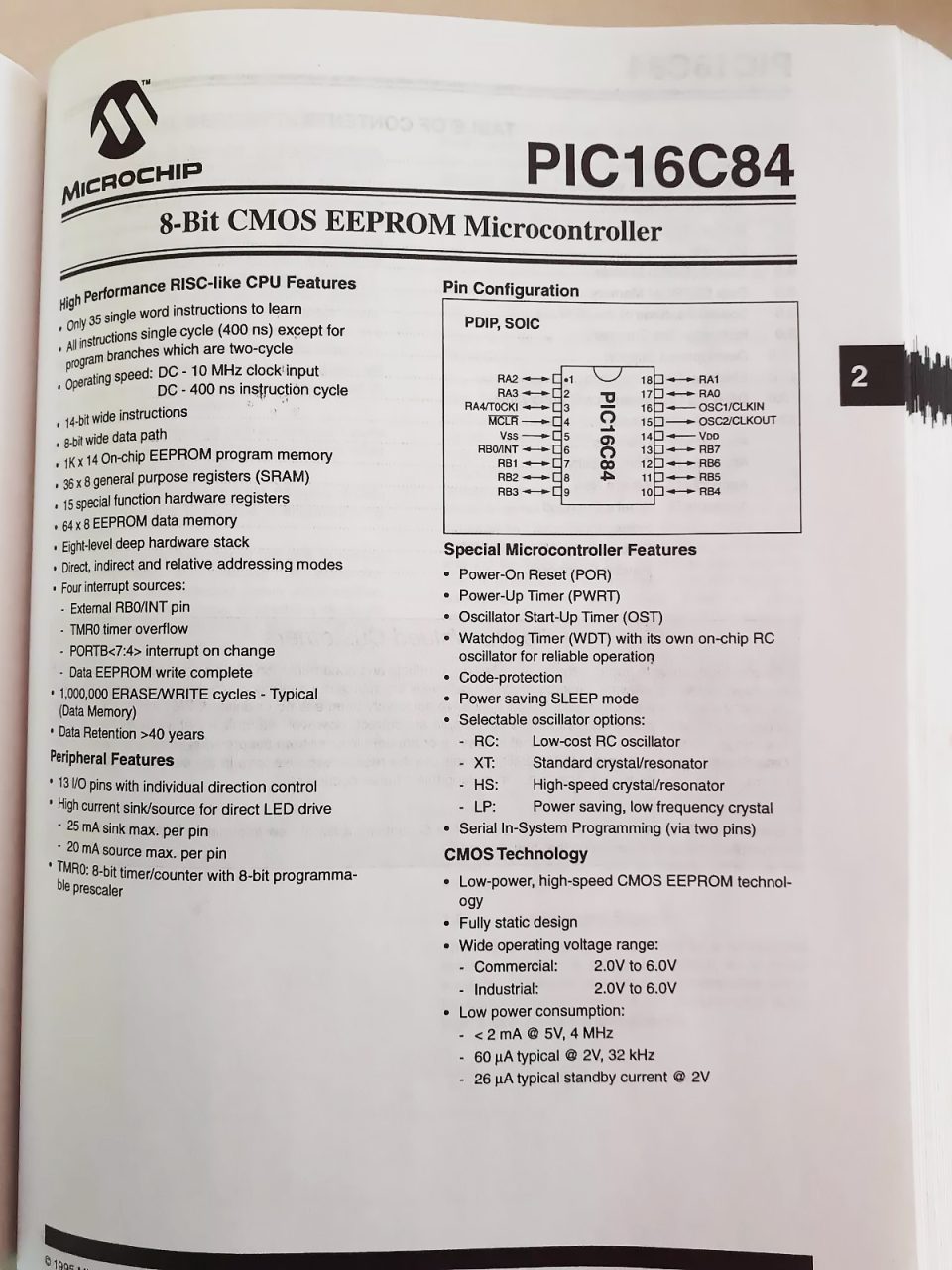
I subsequently used these microcontrollers in a few circuits, specifically the Microprocessor Controller Charging System that I designed for the hobby industry.
In 2008 I bought myself a Microchip PICSTART Plus programmer and started using the PIC16F877A. I built a development board with an ICL7135 DMM module. The intention was to use it for my Digital PWM Power Supply motherboard, but I never finished it.
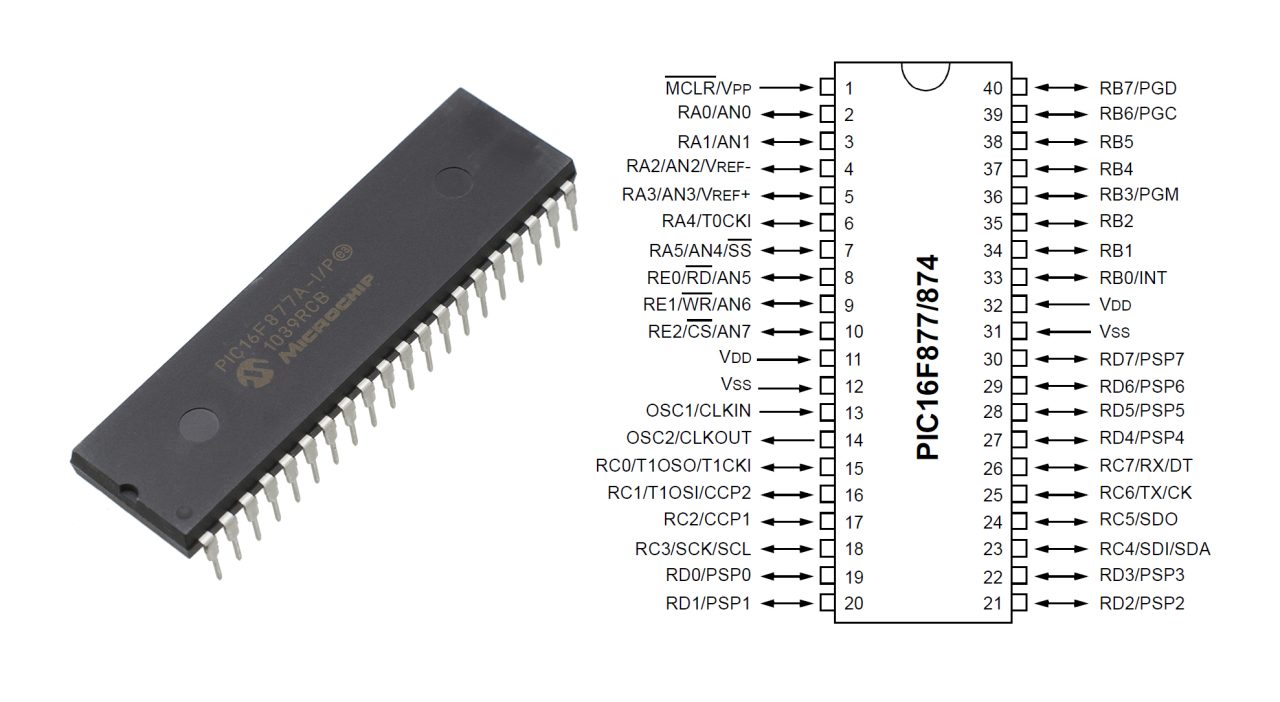
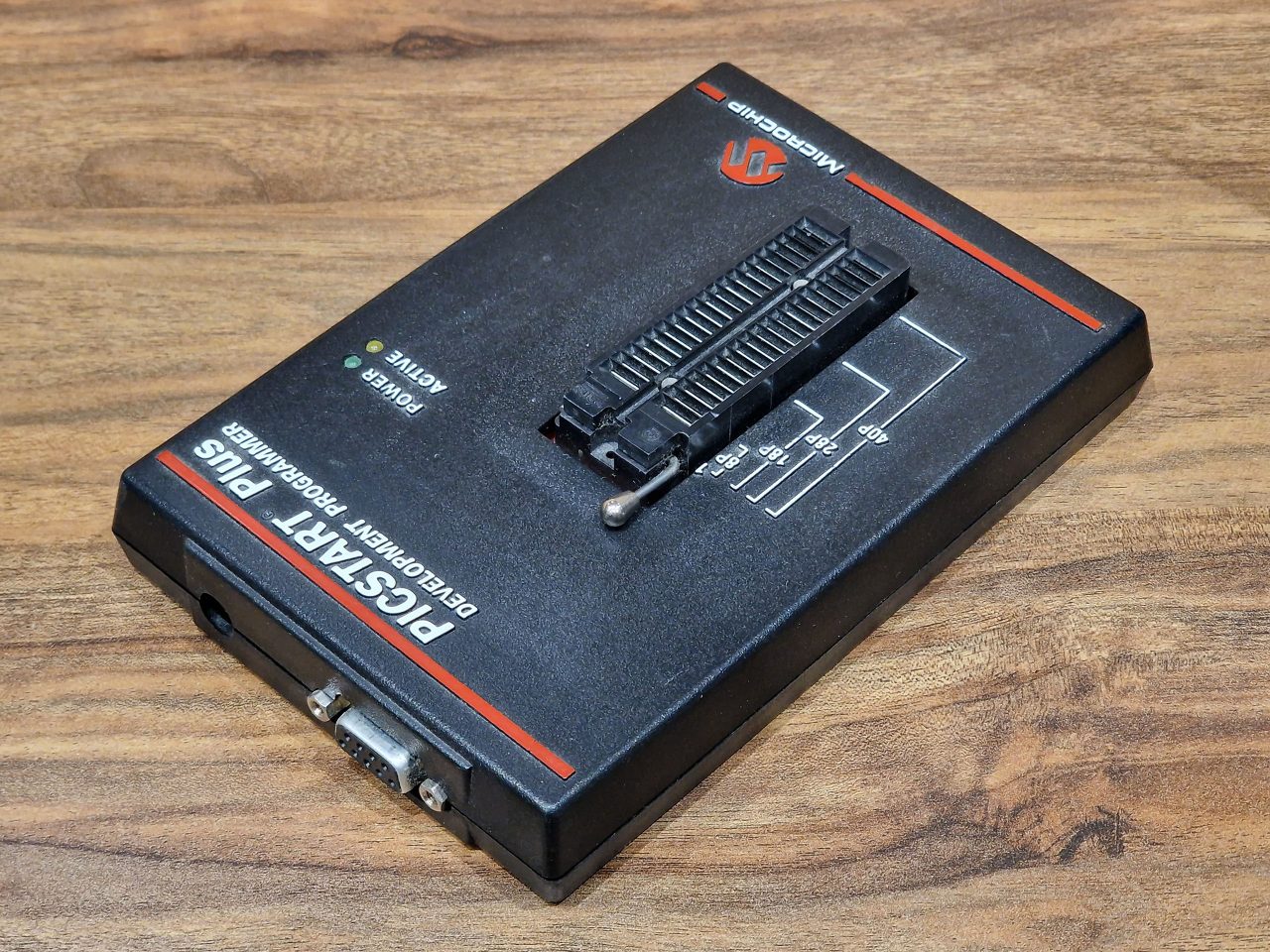
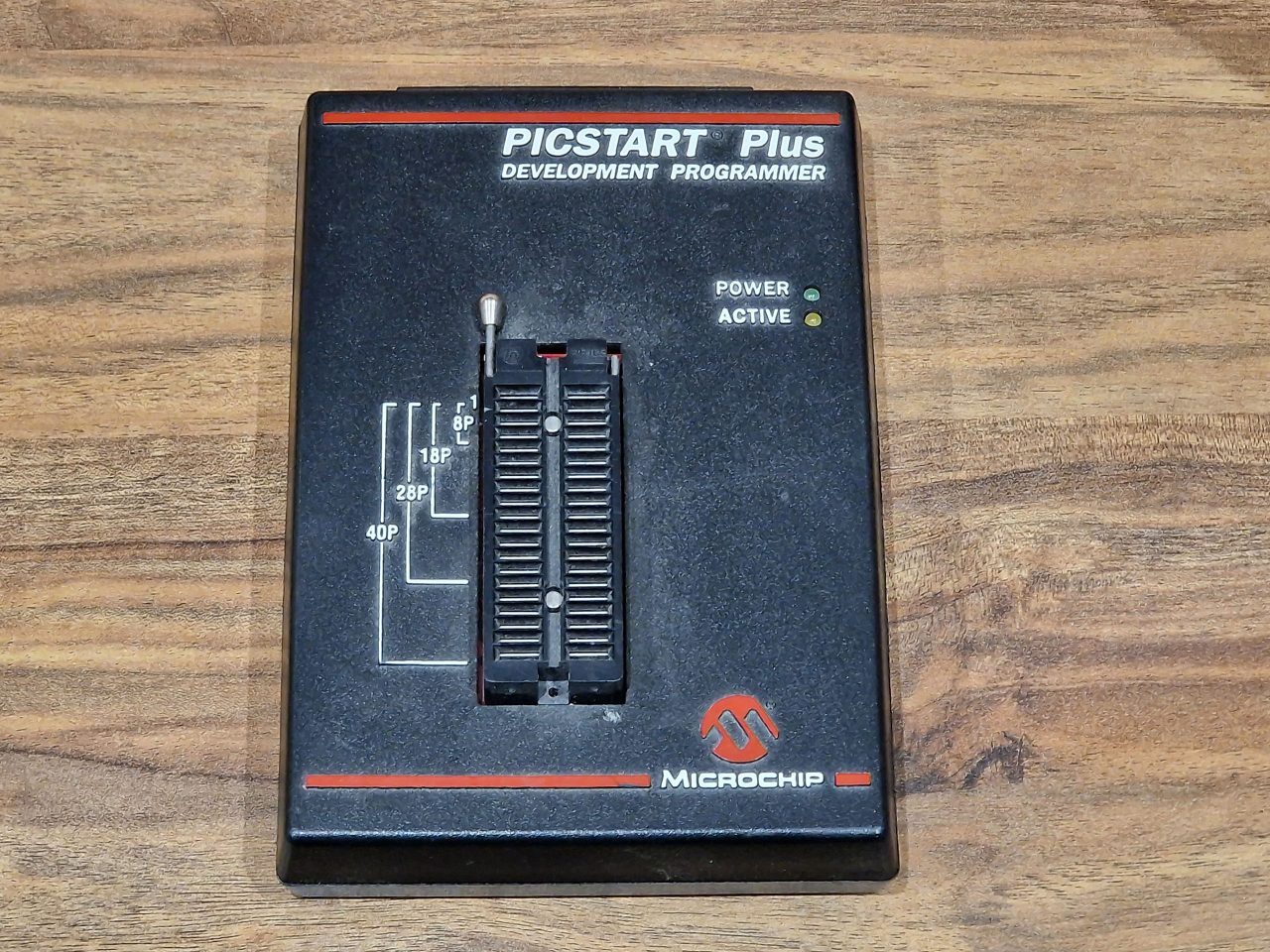
The official IDE for programming PIC microcontrollers is MPLAB, provided free by Microchip. It allows comprehensive simulated debugging, with the ability to inspect registers, breakpoints etc. You can install C compilers to write code in C if desired, but I never got that far, and C compilers were not free back in the 90s.
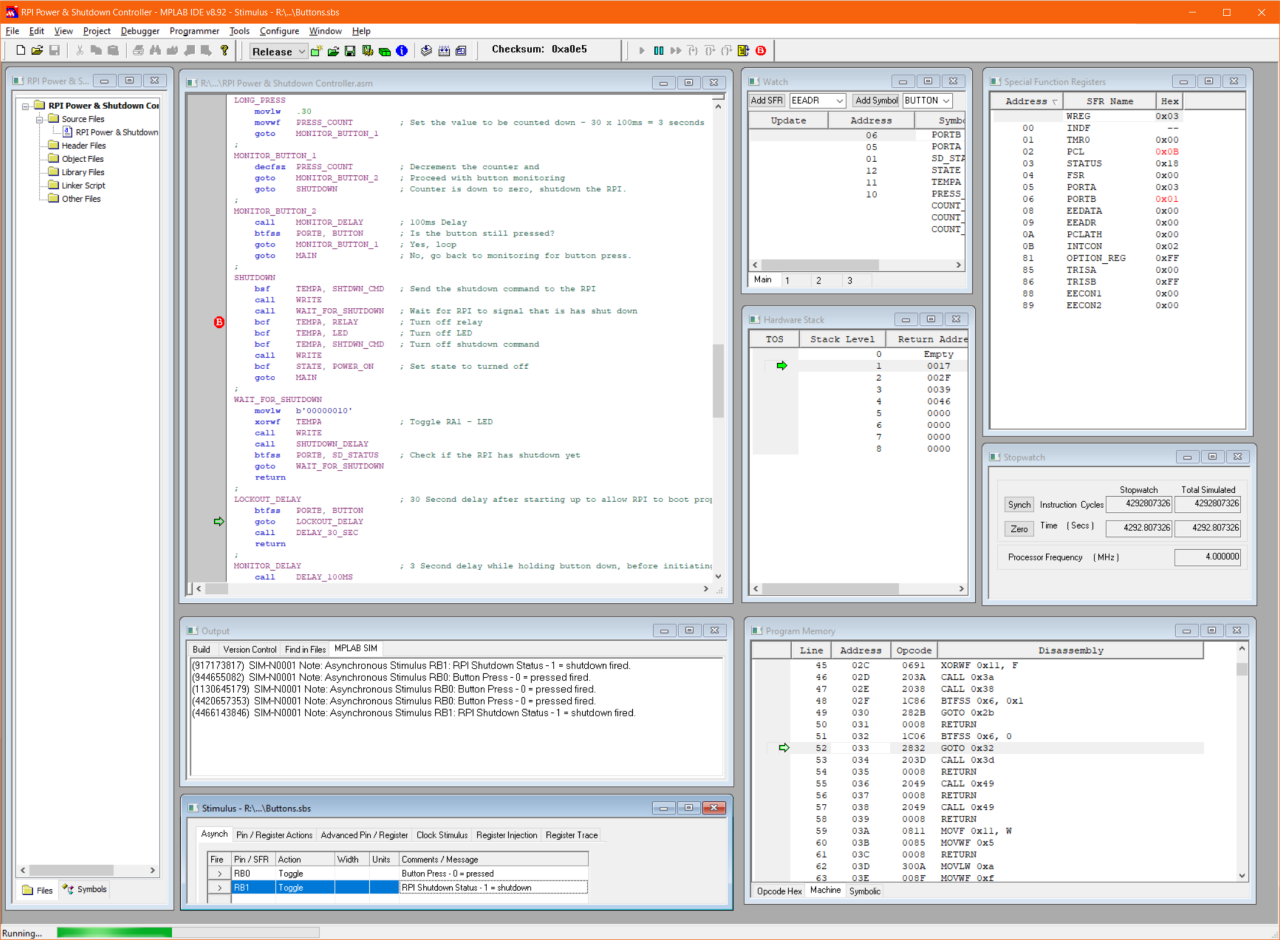
In 1998 I became interested in computers and I switched careers to IT. I would have loved to continue with electronic engineering, specifically in the field of robotics, but the lure of IT and computers in the mid-nineties was strong!
My Old Electronic Work Areas
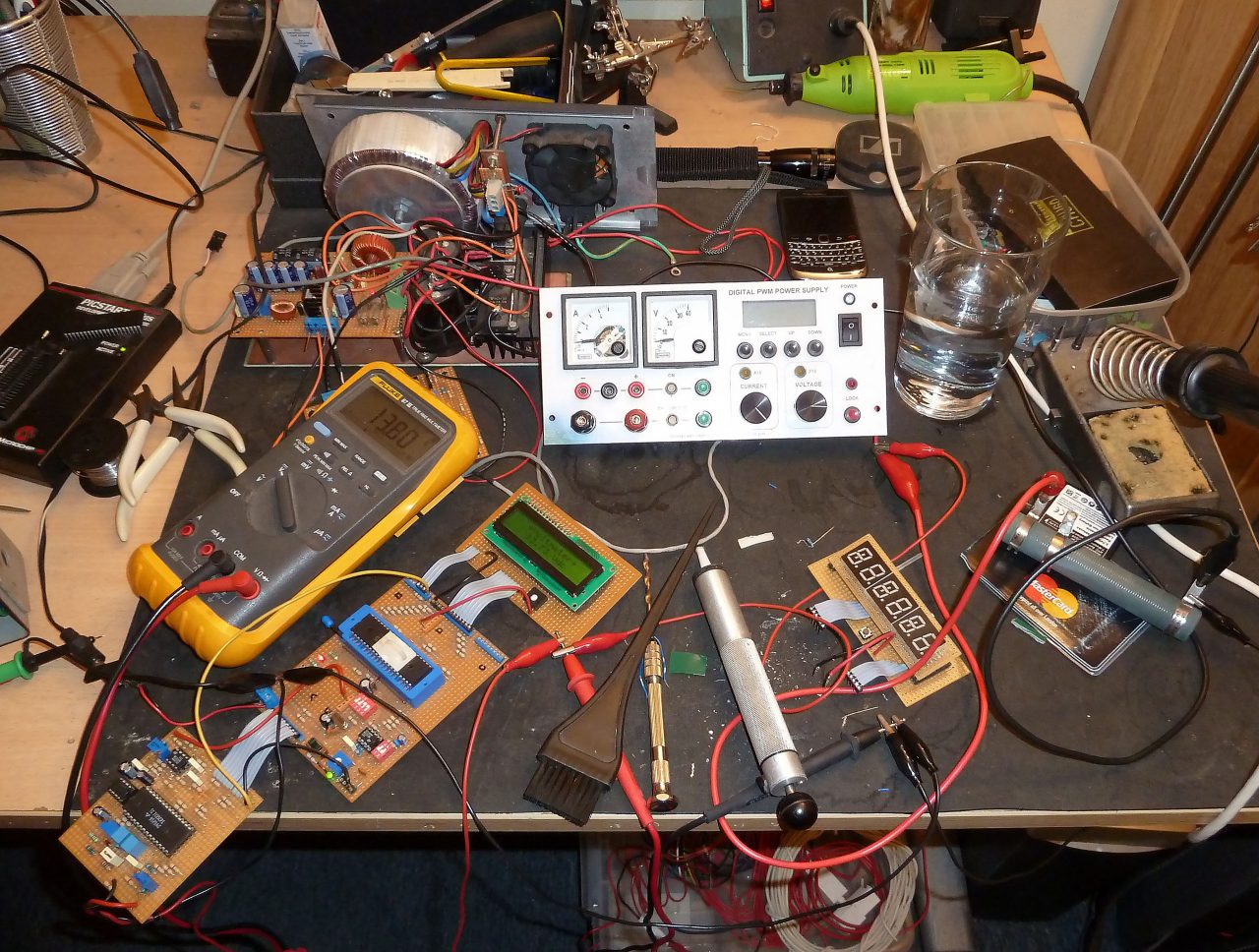
Electronics is now just a hobby now – but my favourite one. Over the years I have expanded my collection of components, tools and equipment, and now that I have a fully fledged electronics lab, I will be designing and building a lot more fun projects!
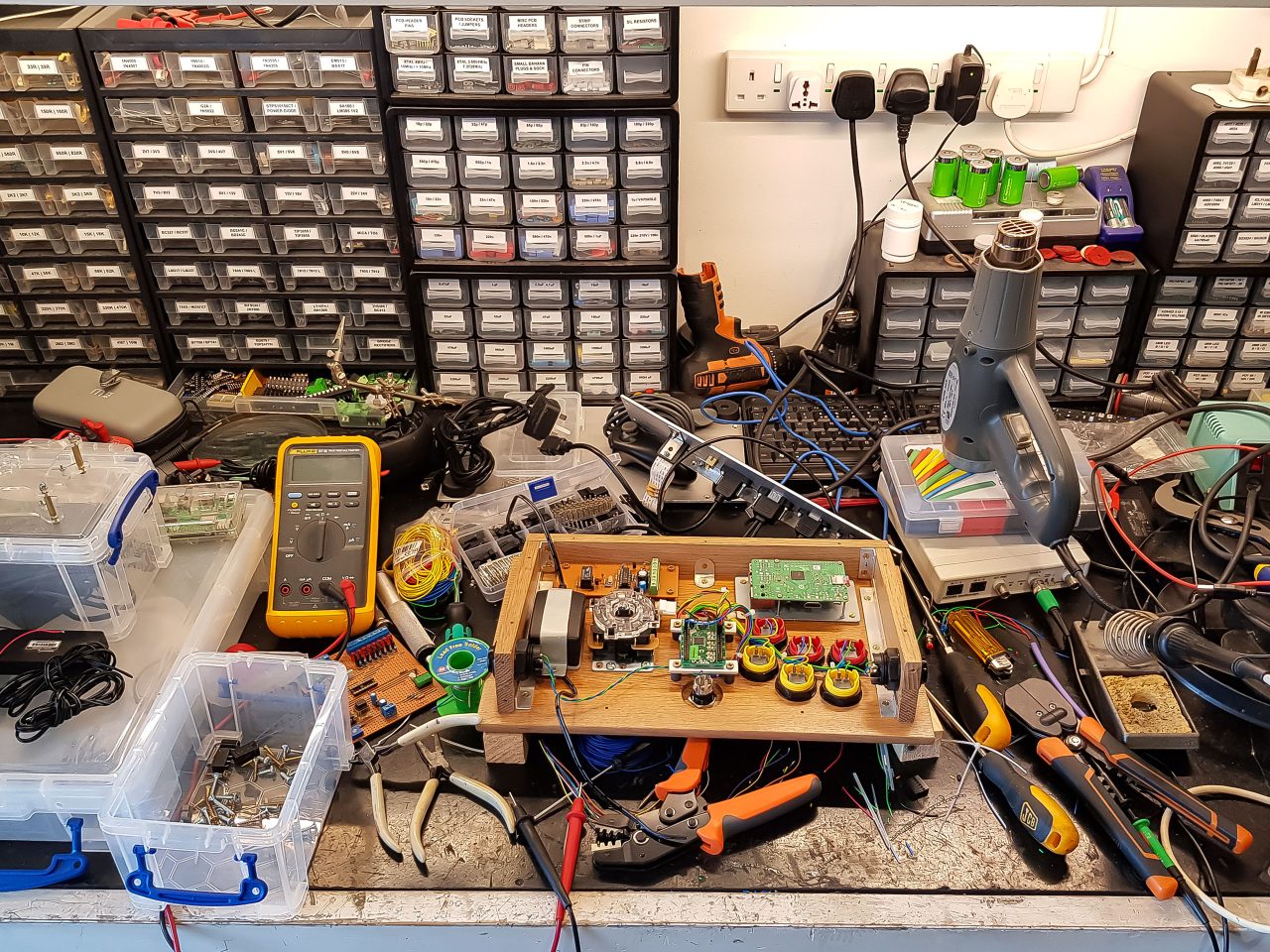
Gallery
